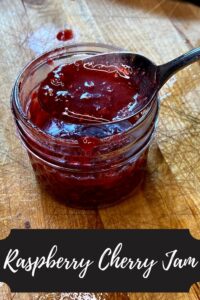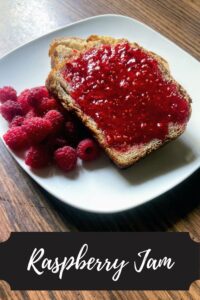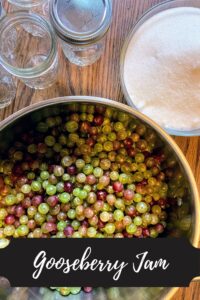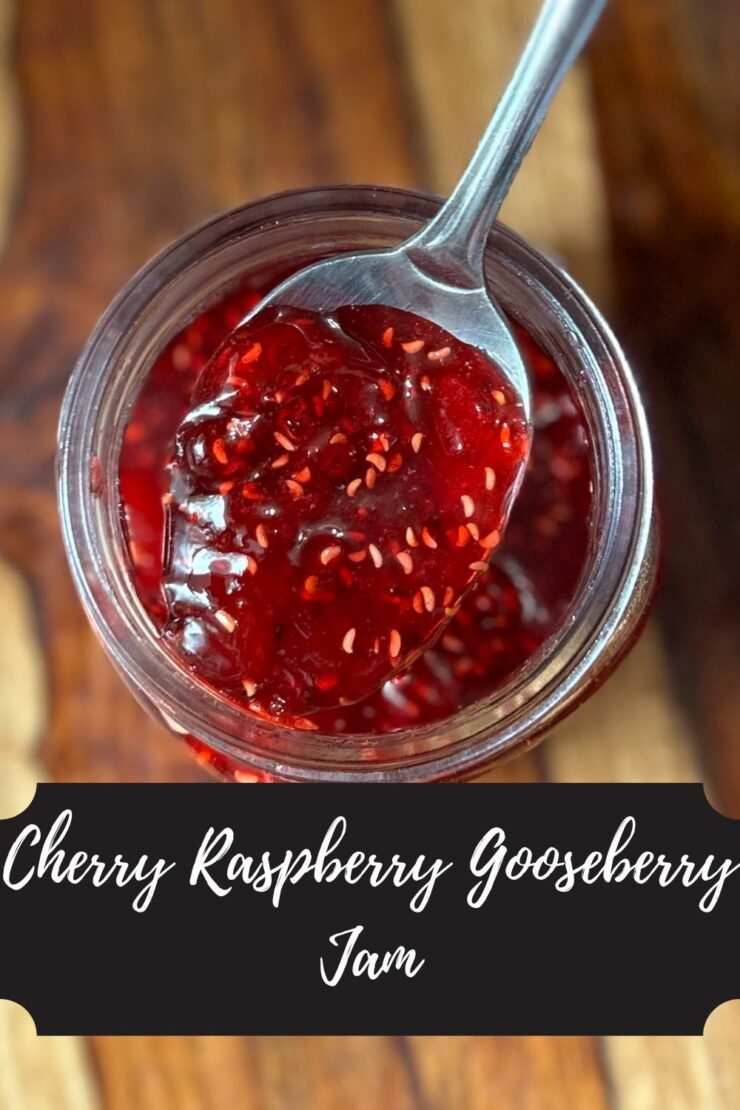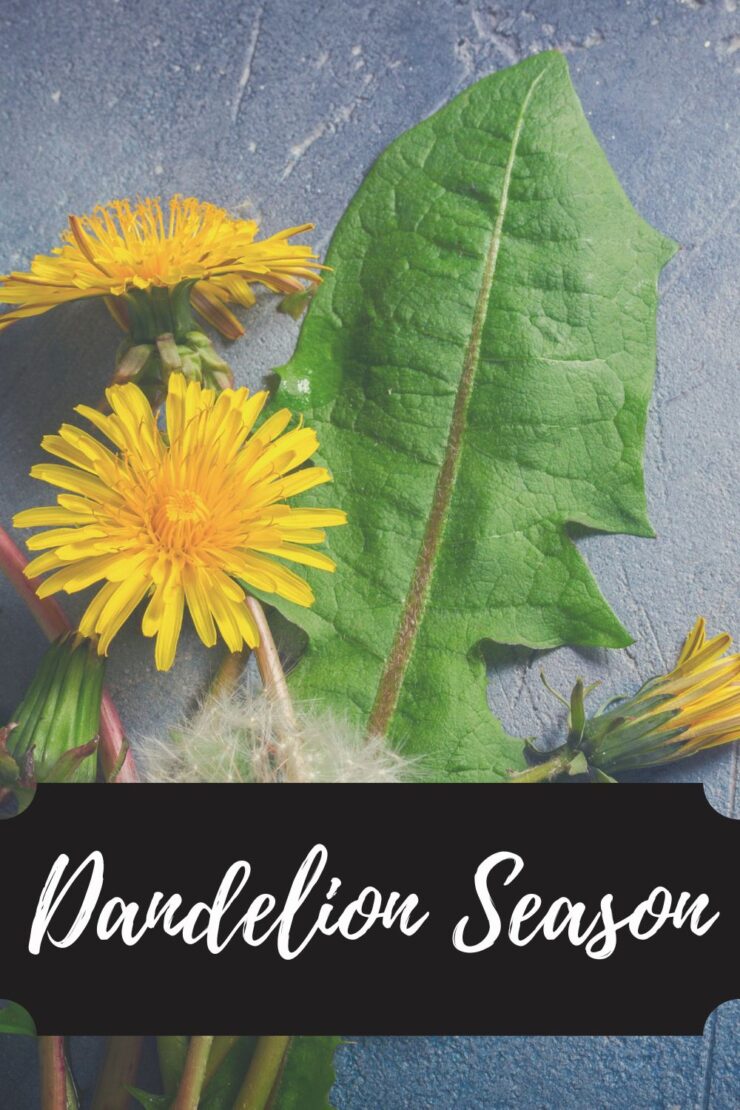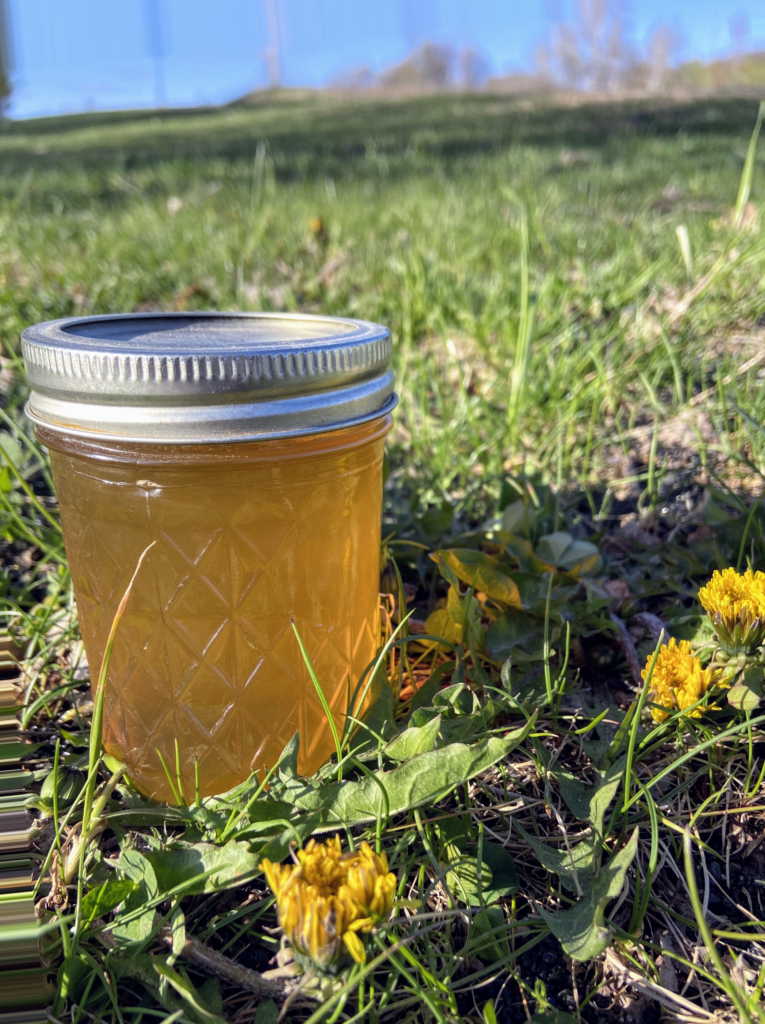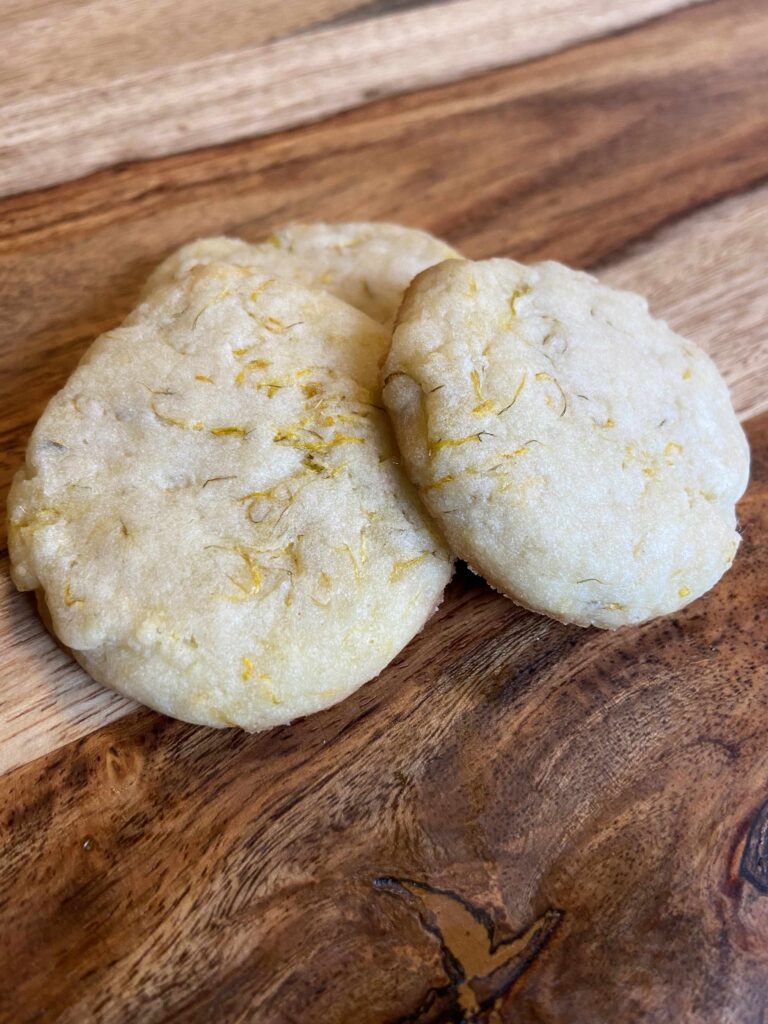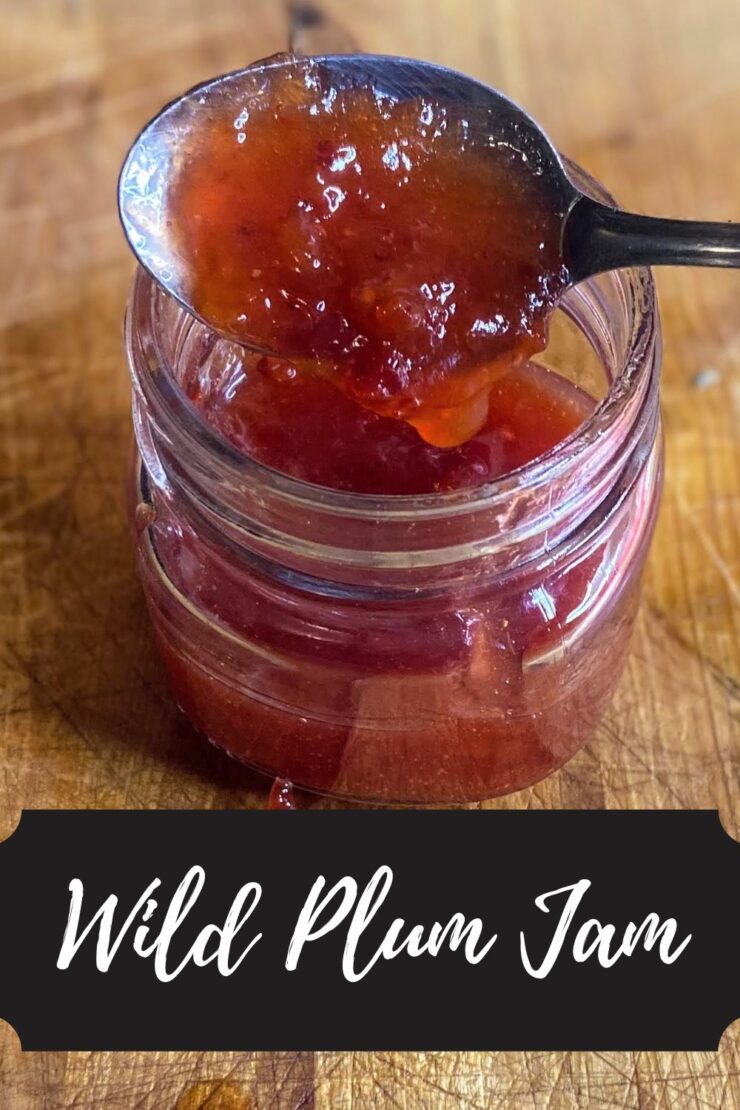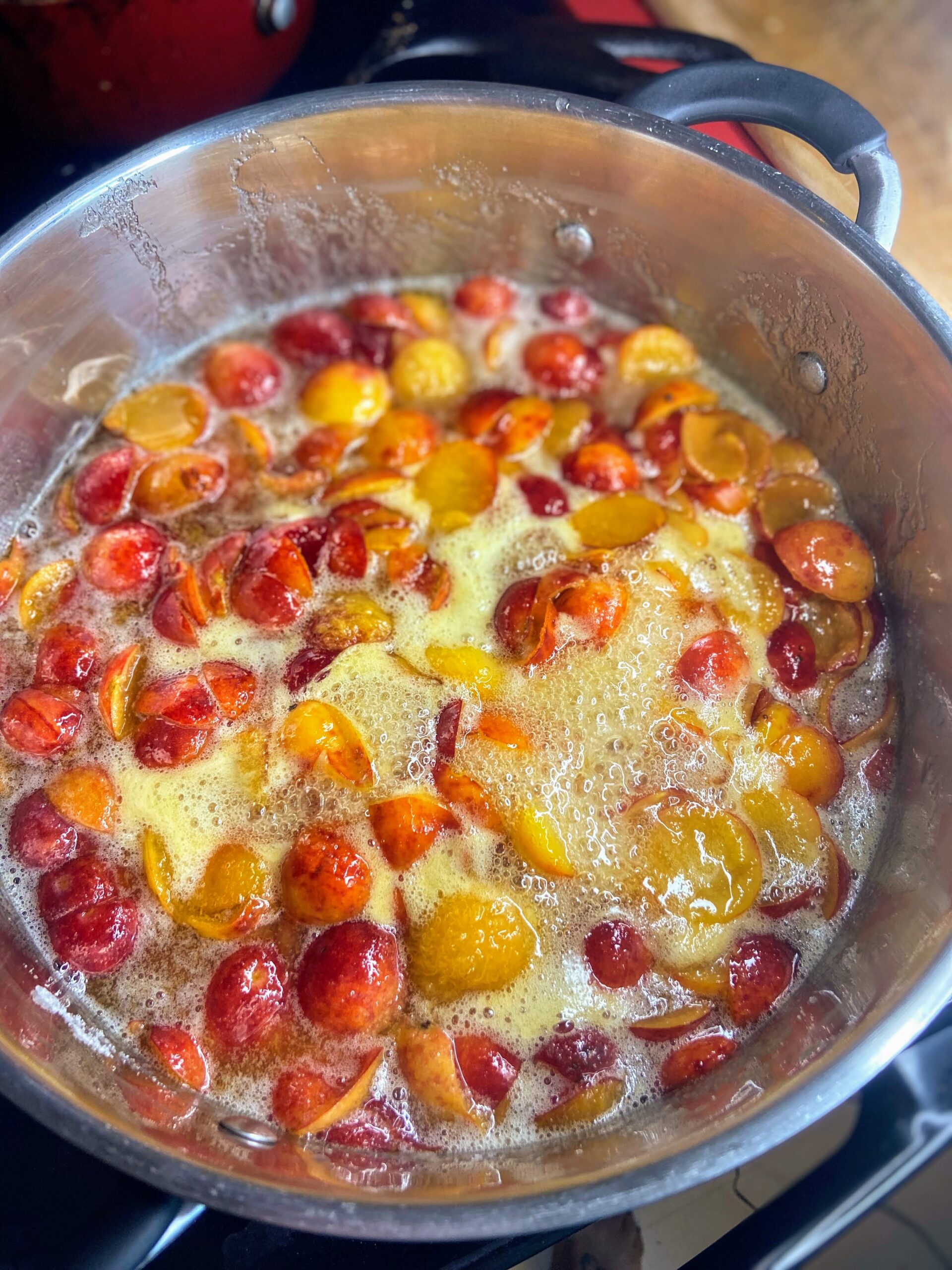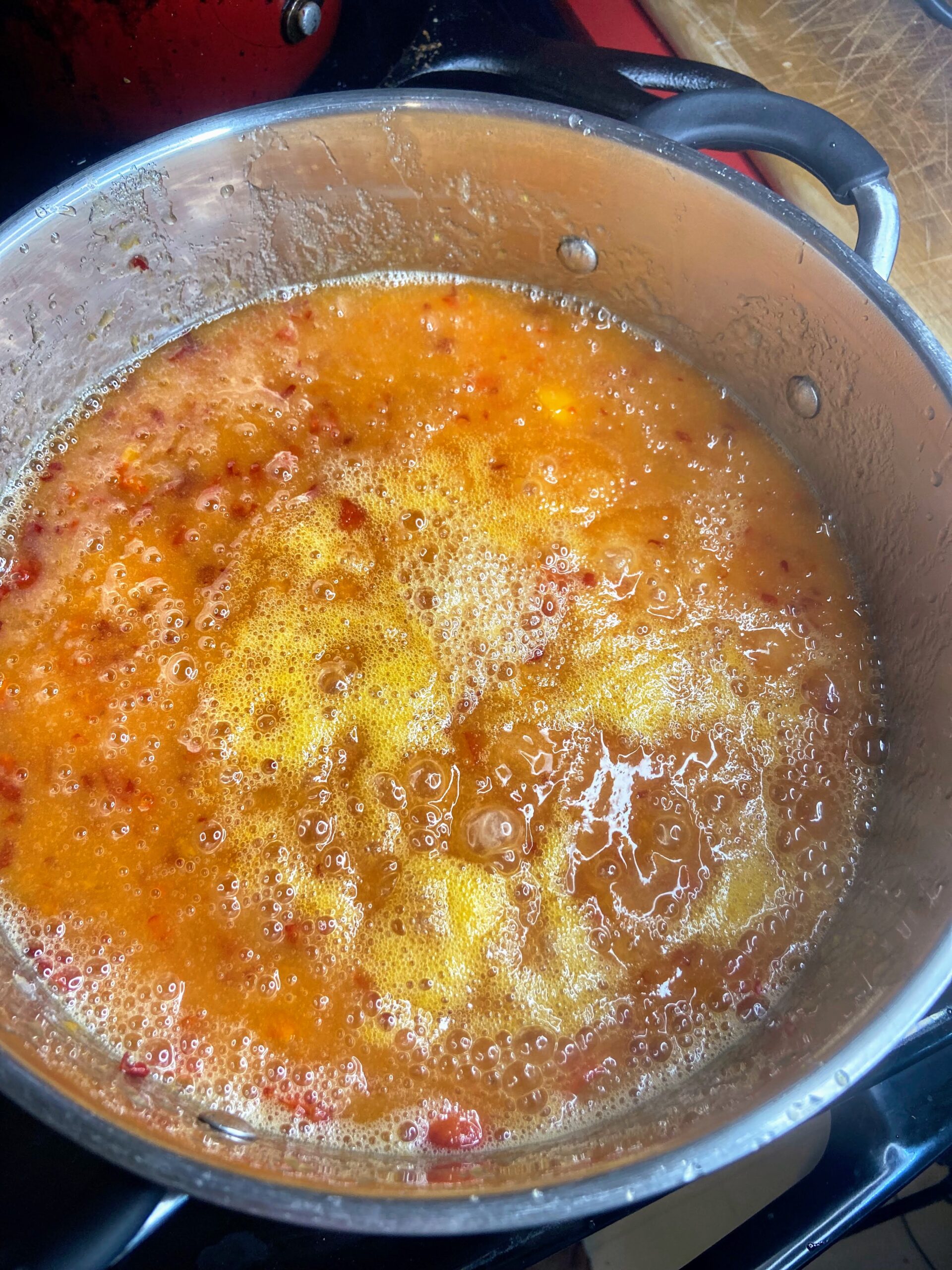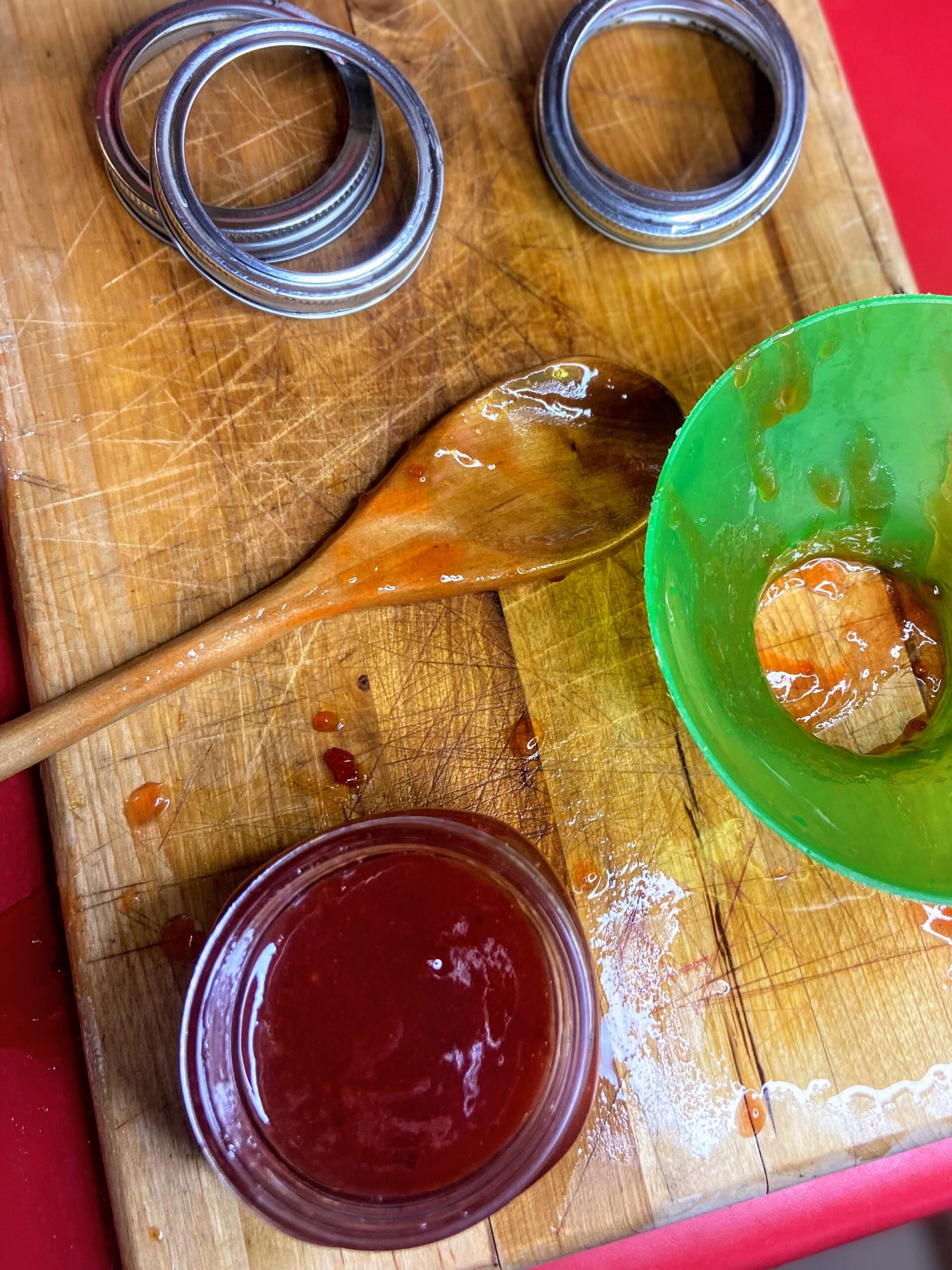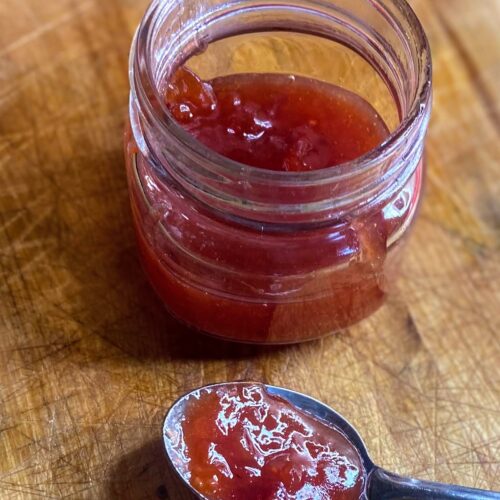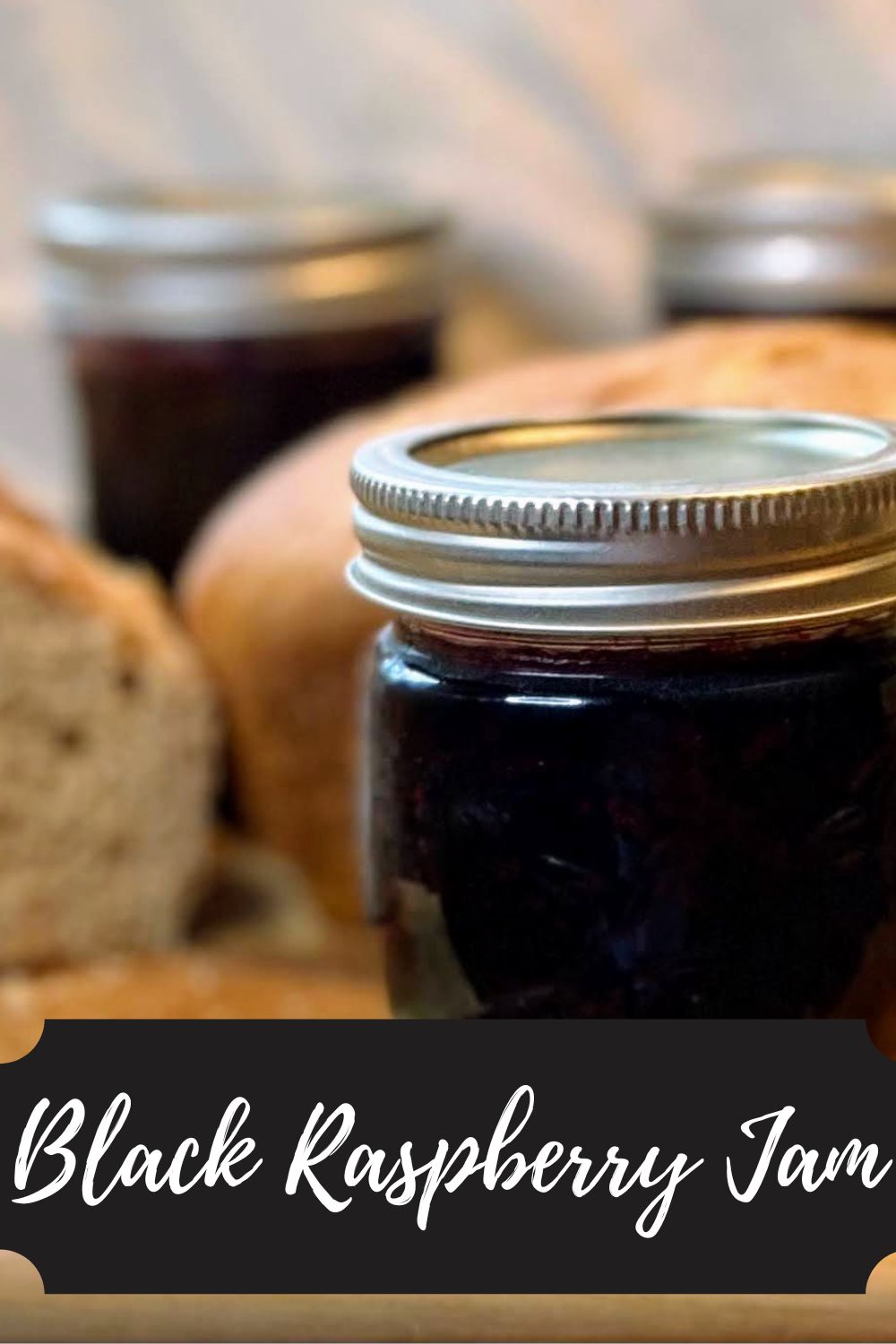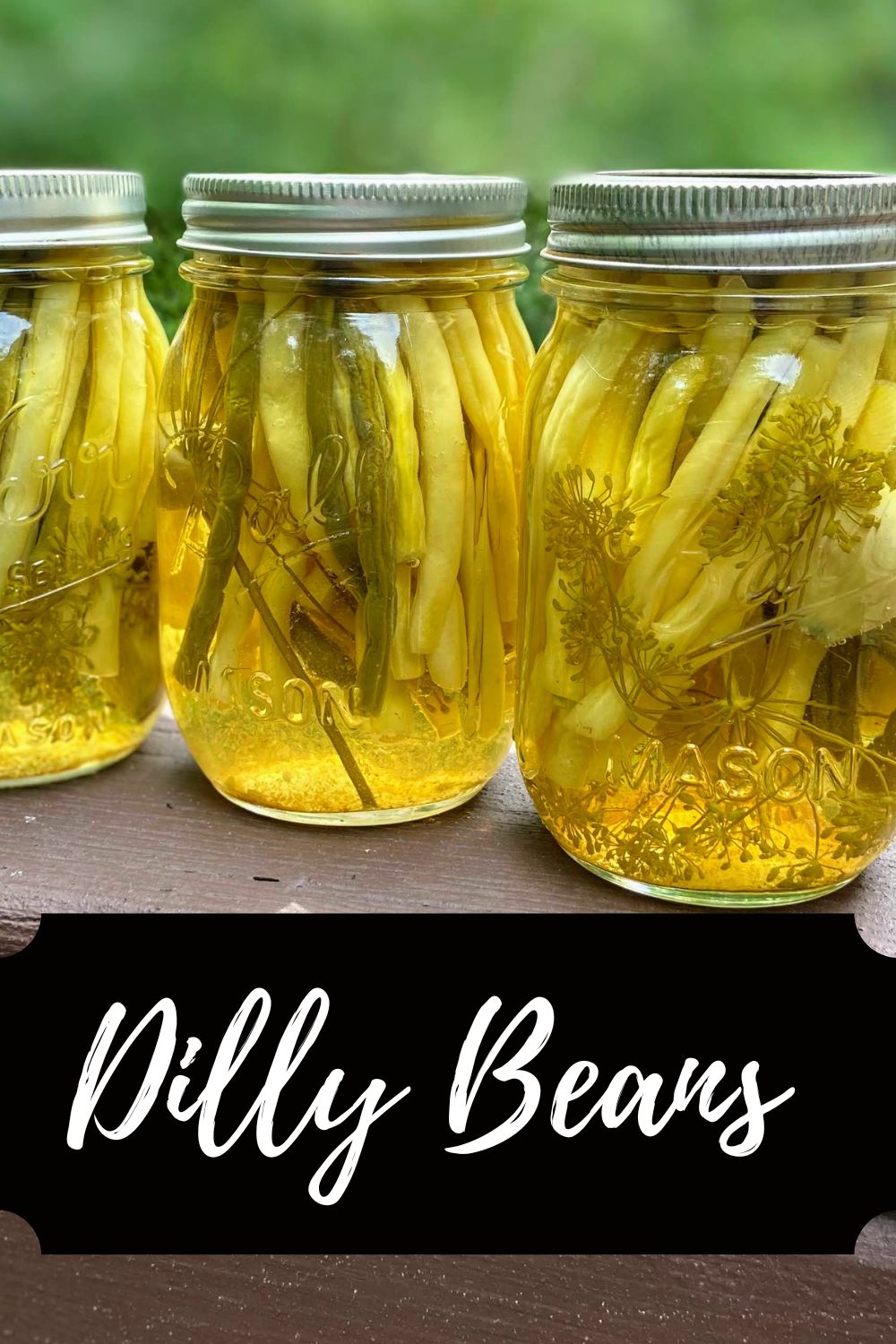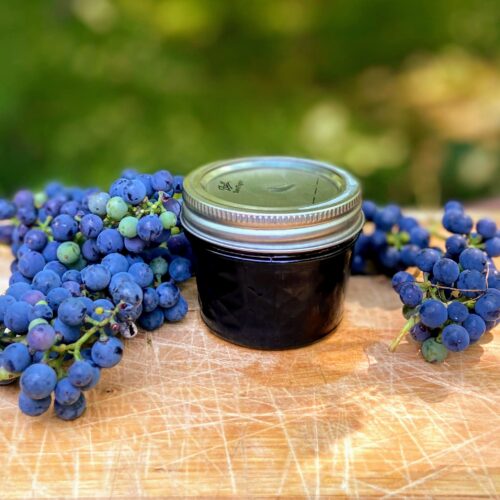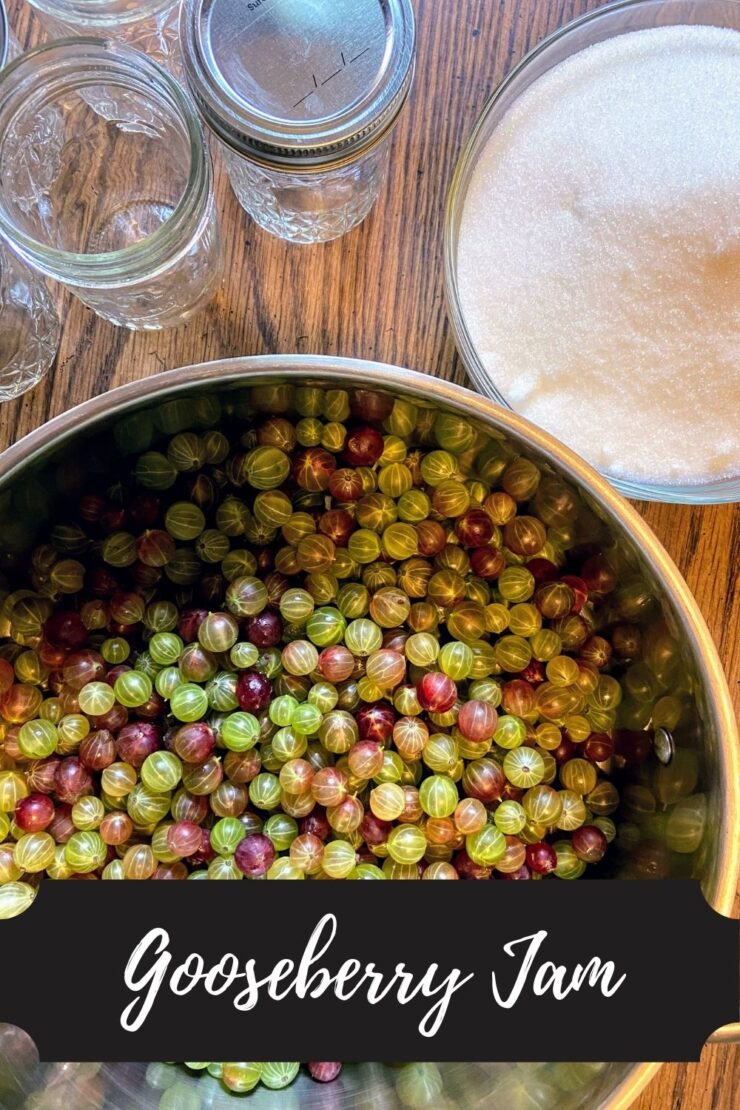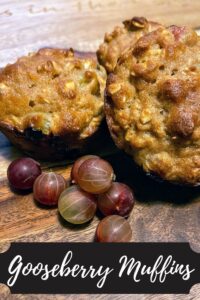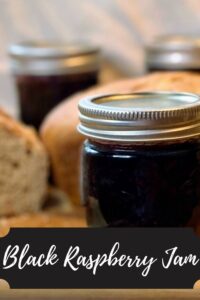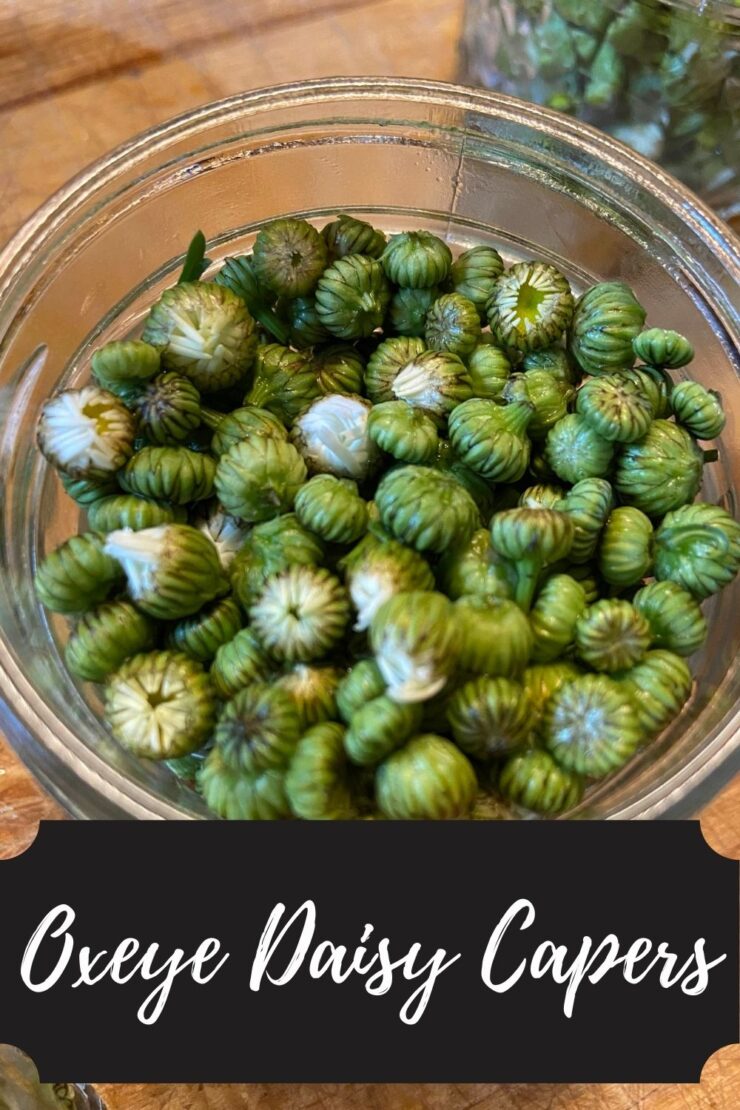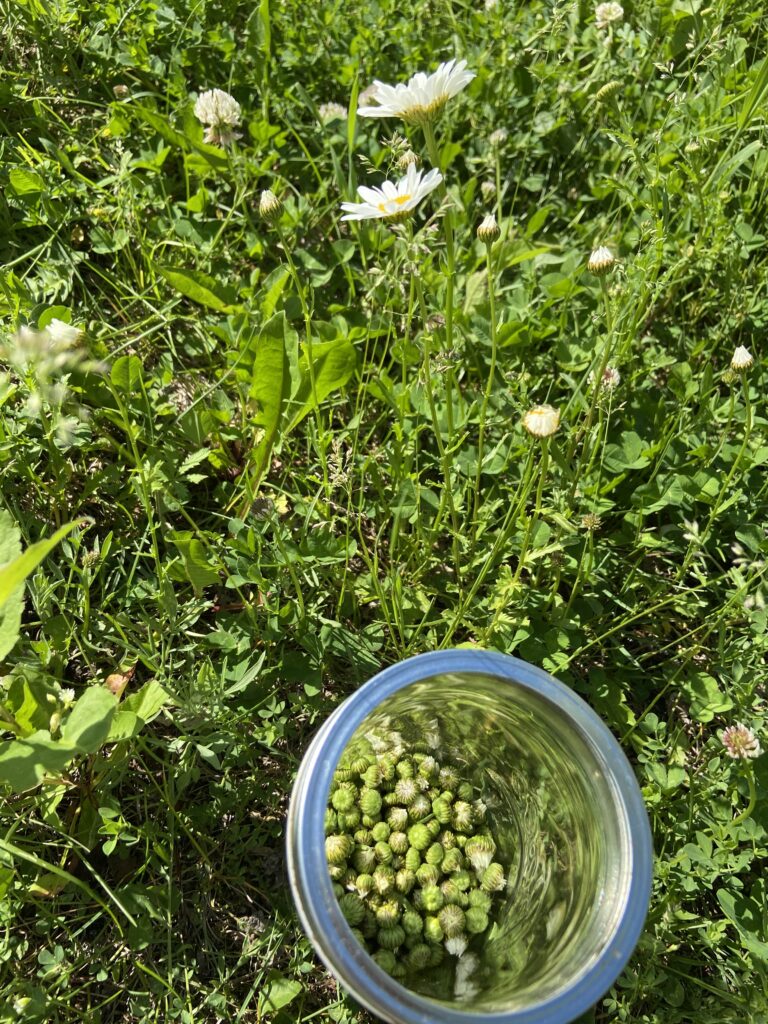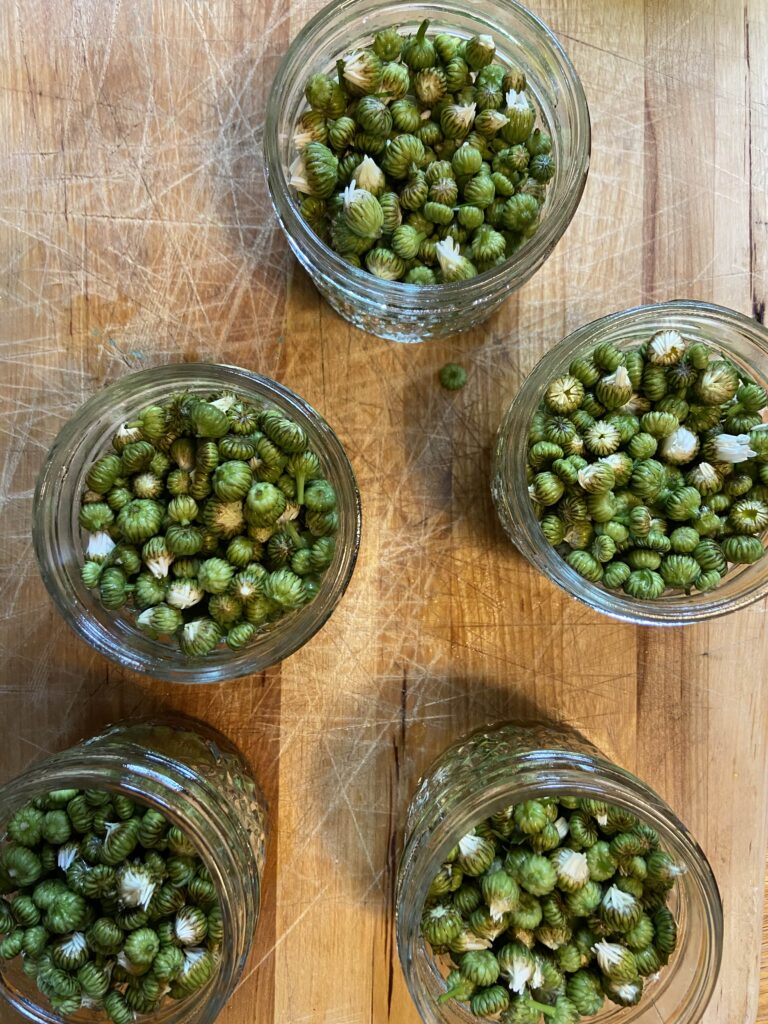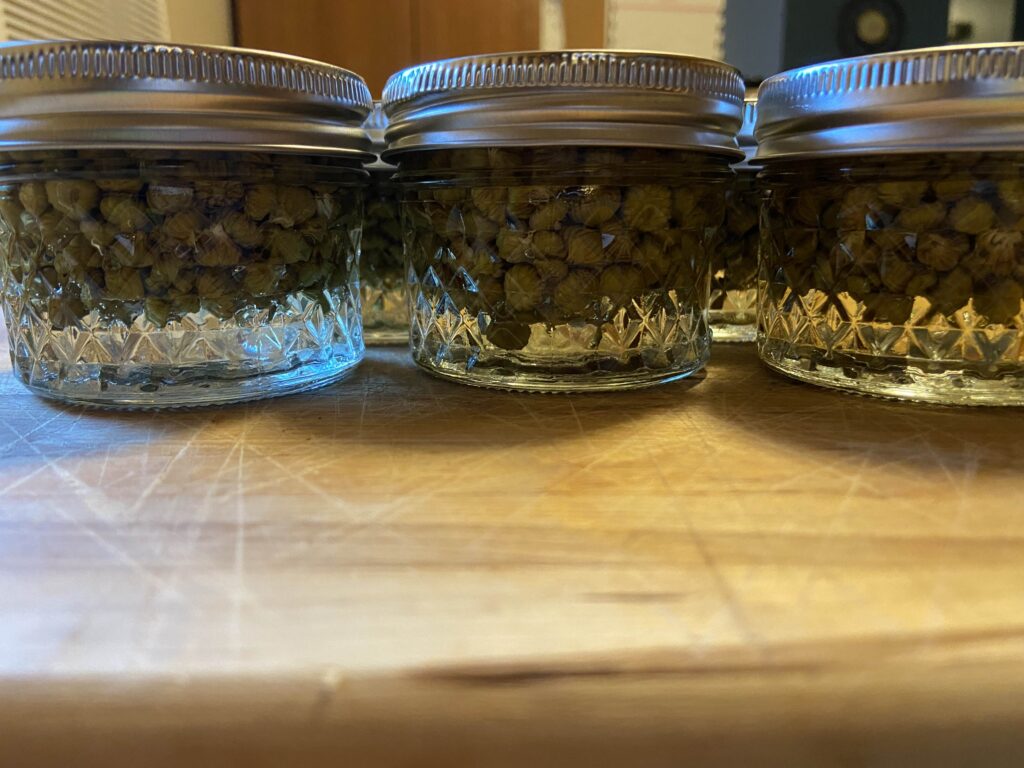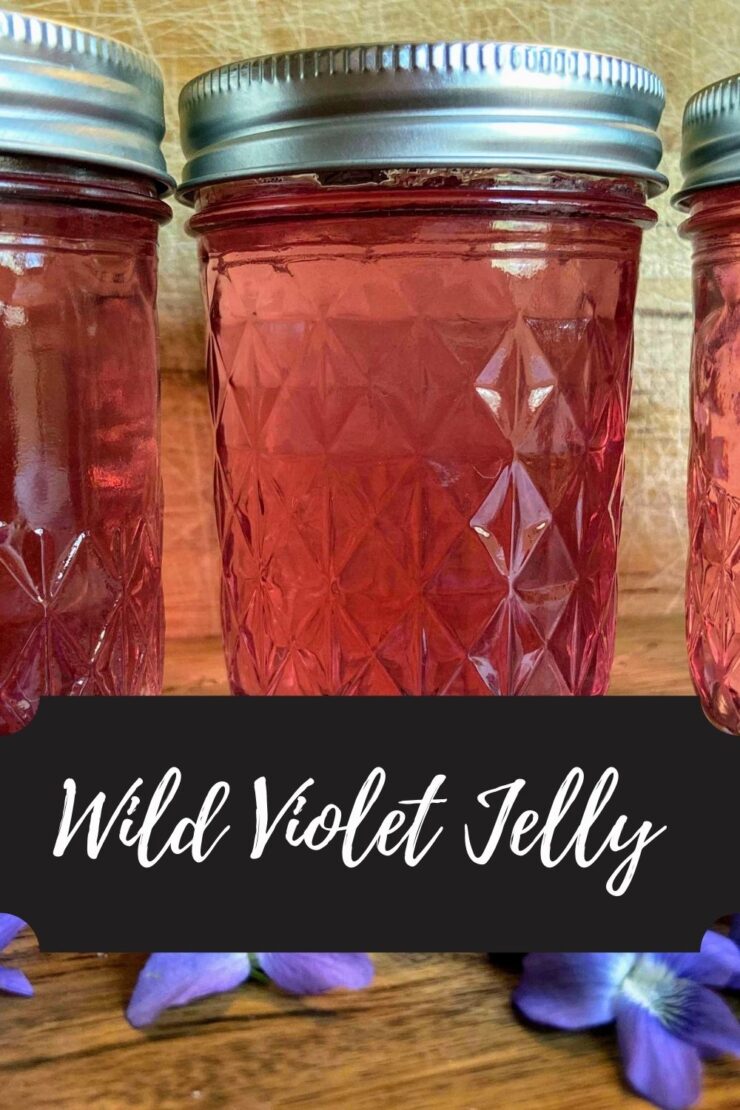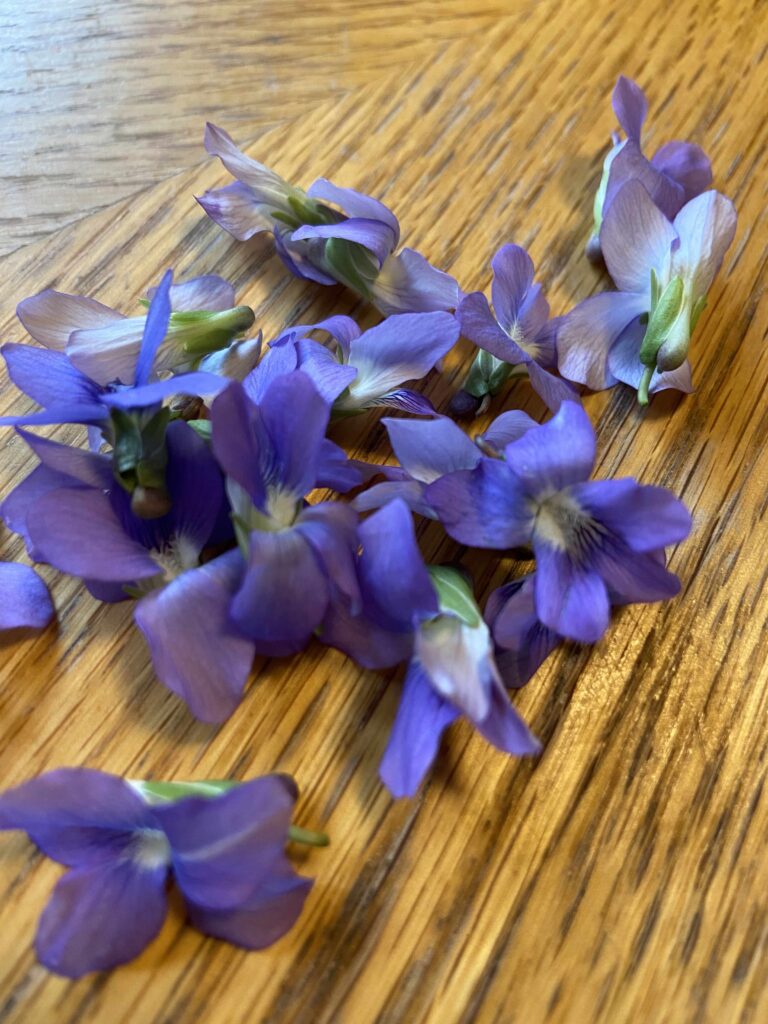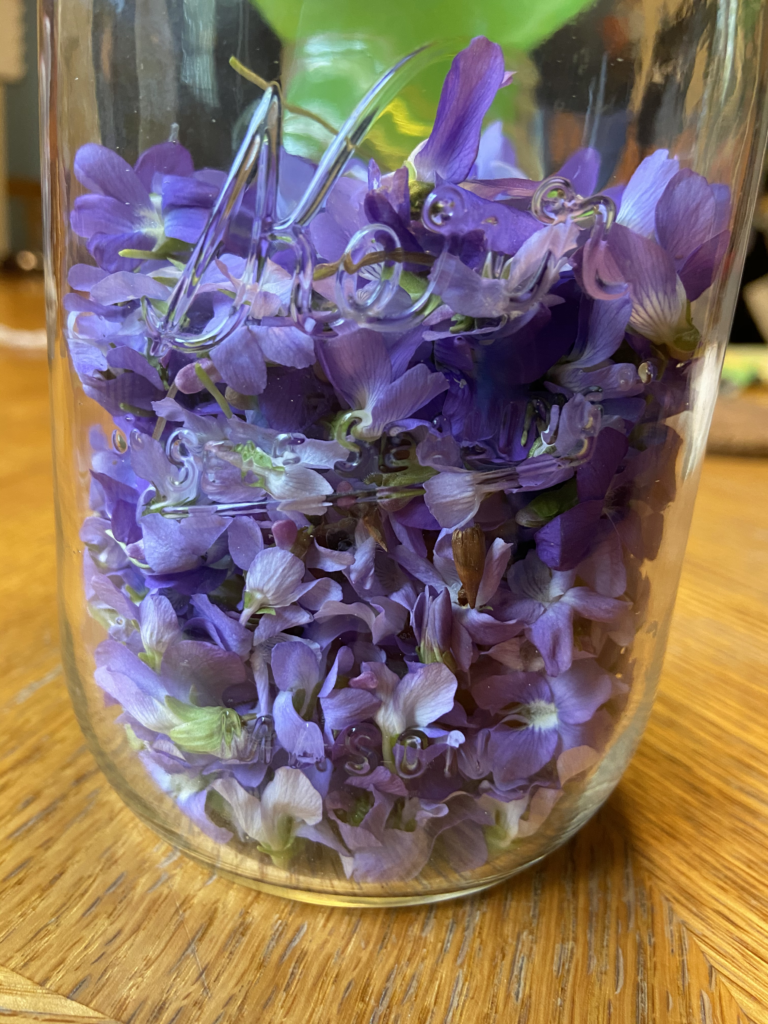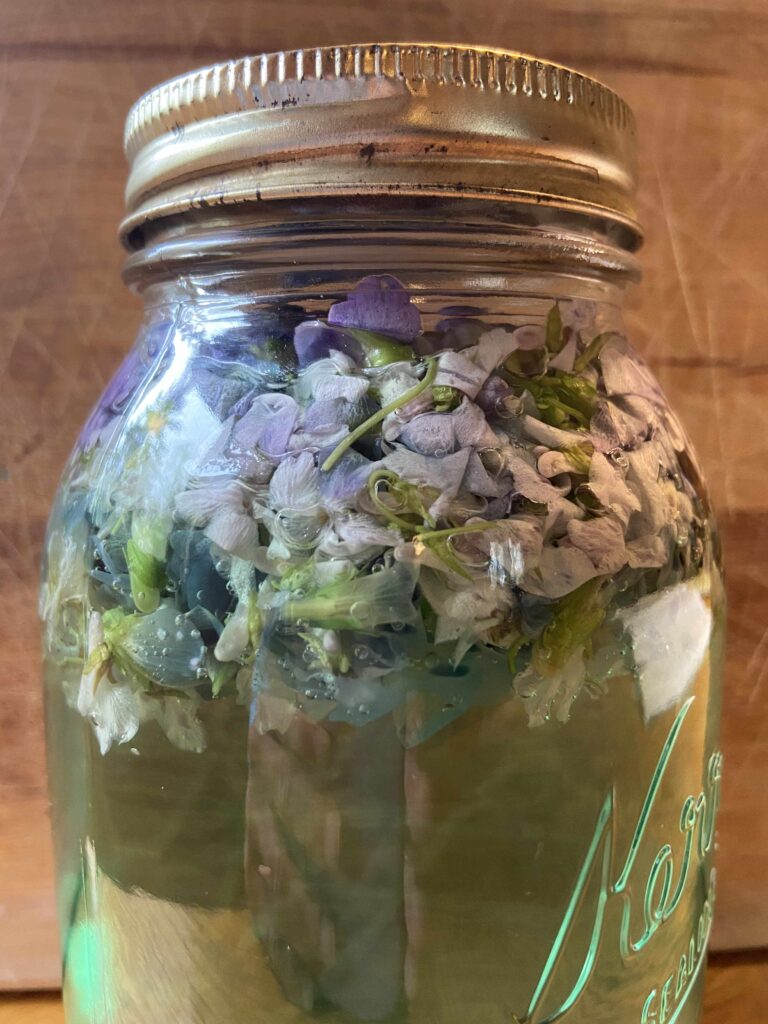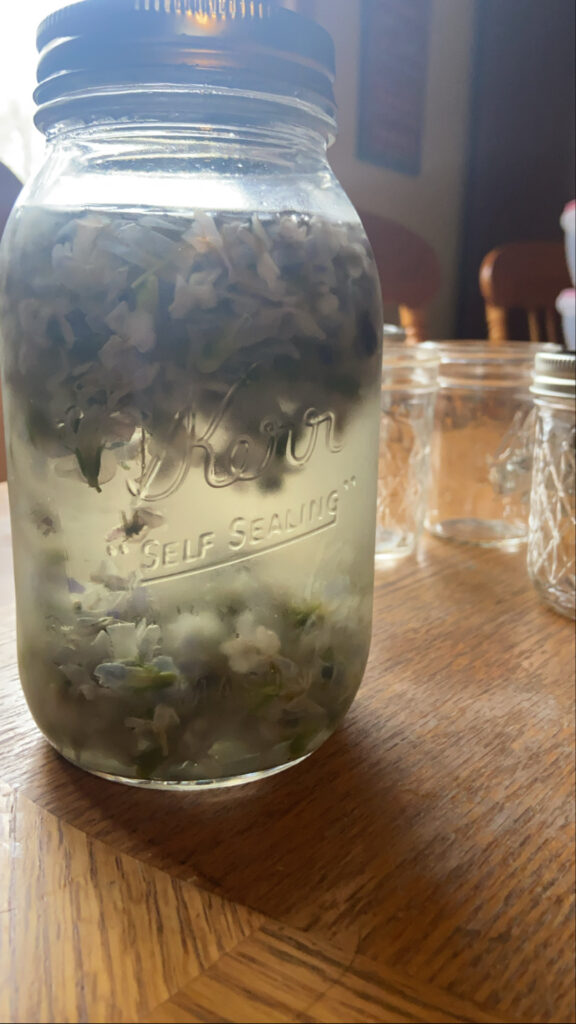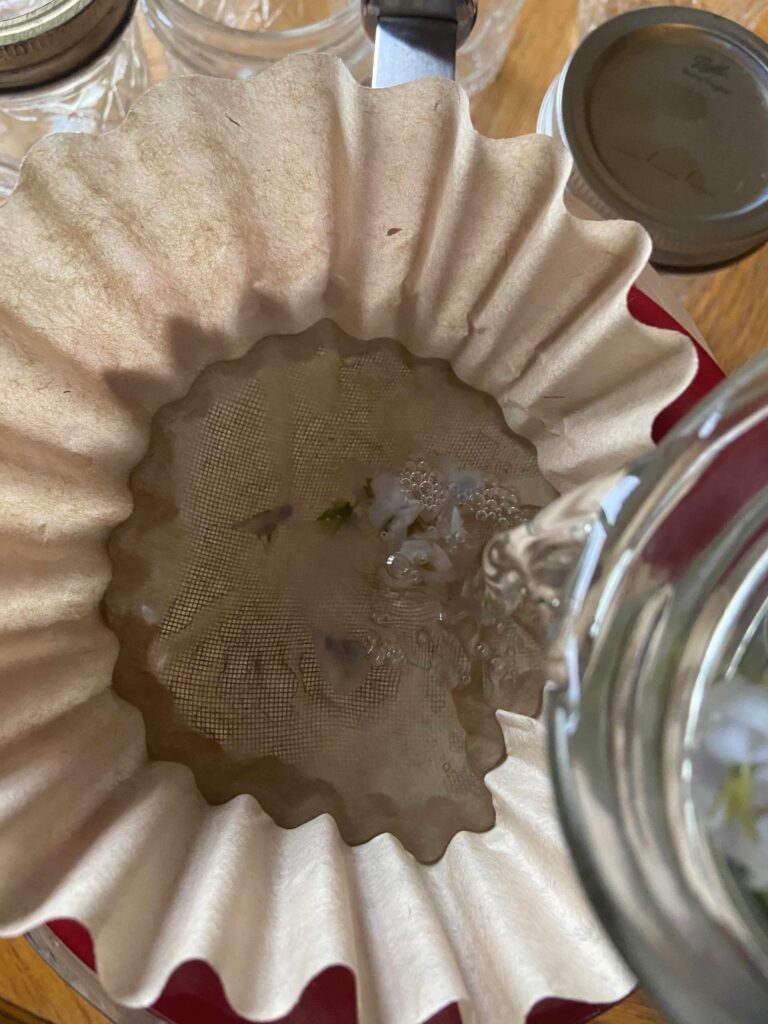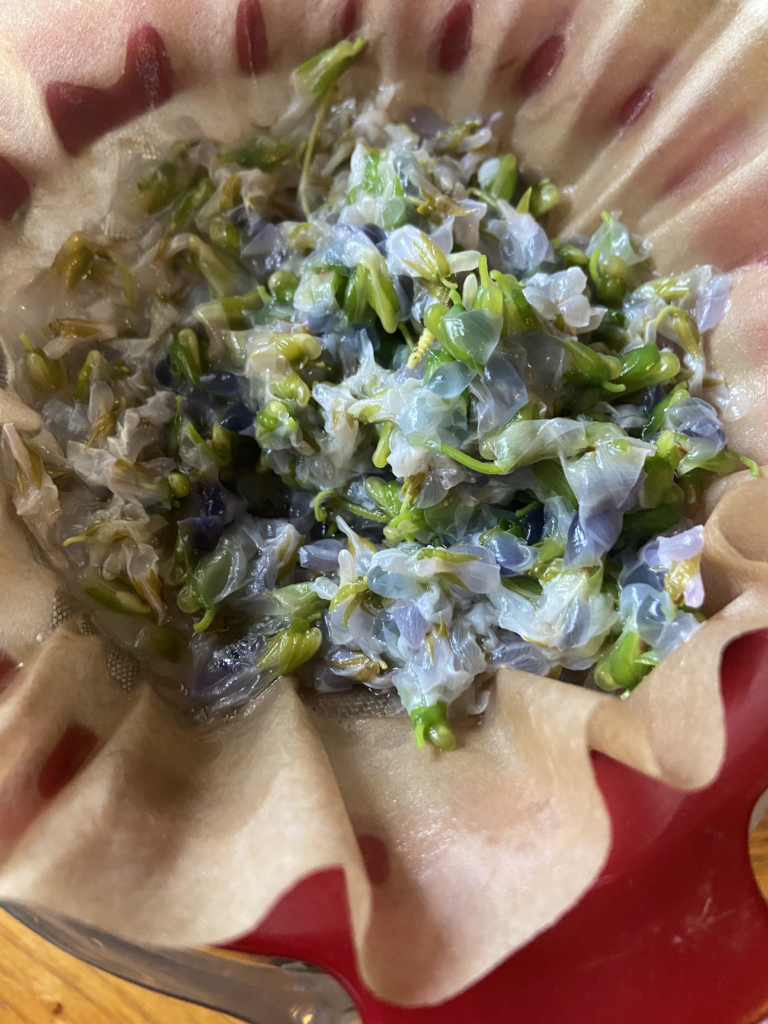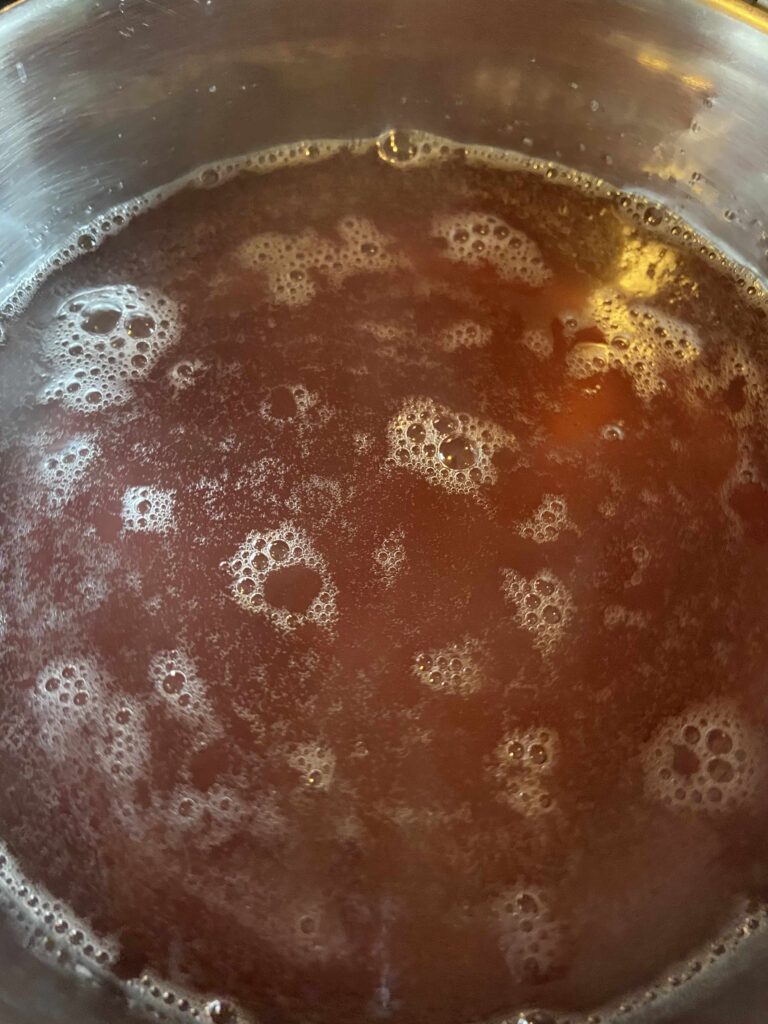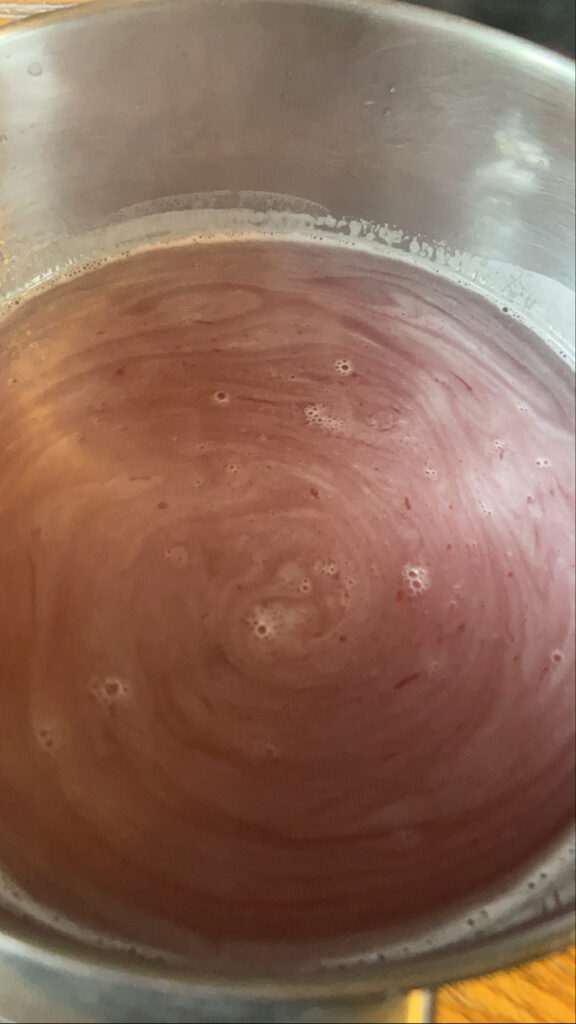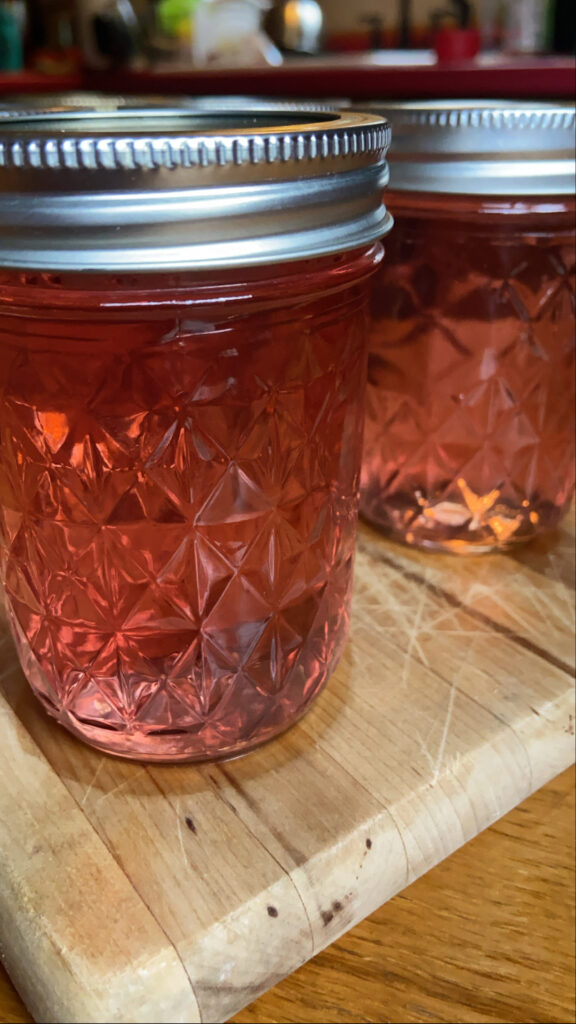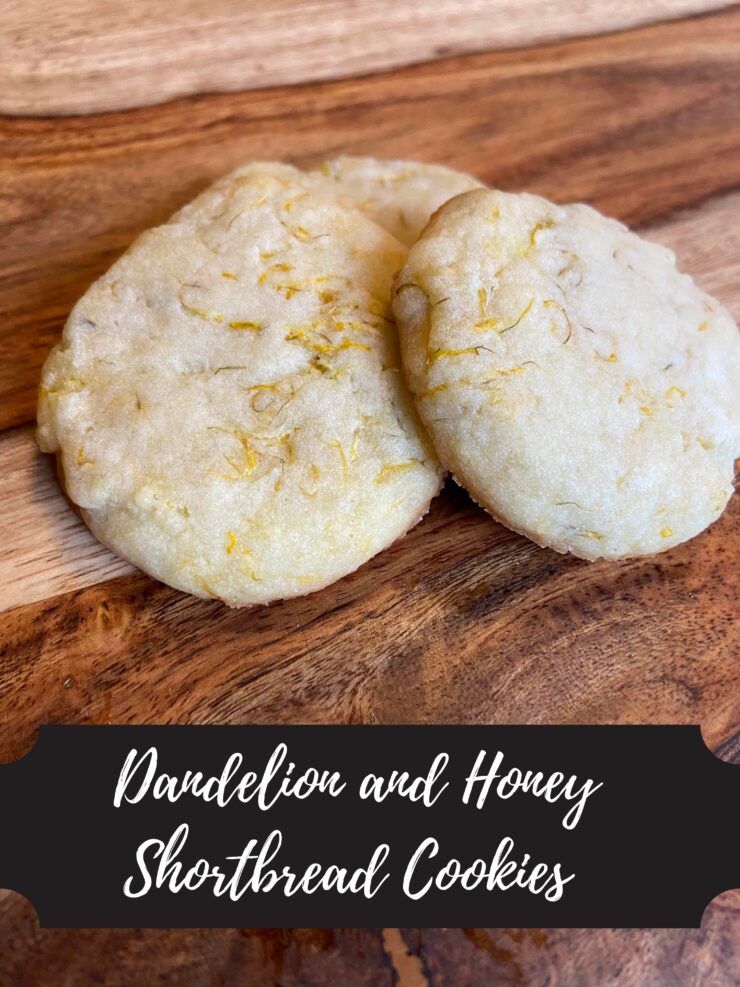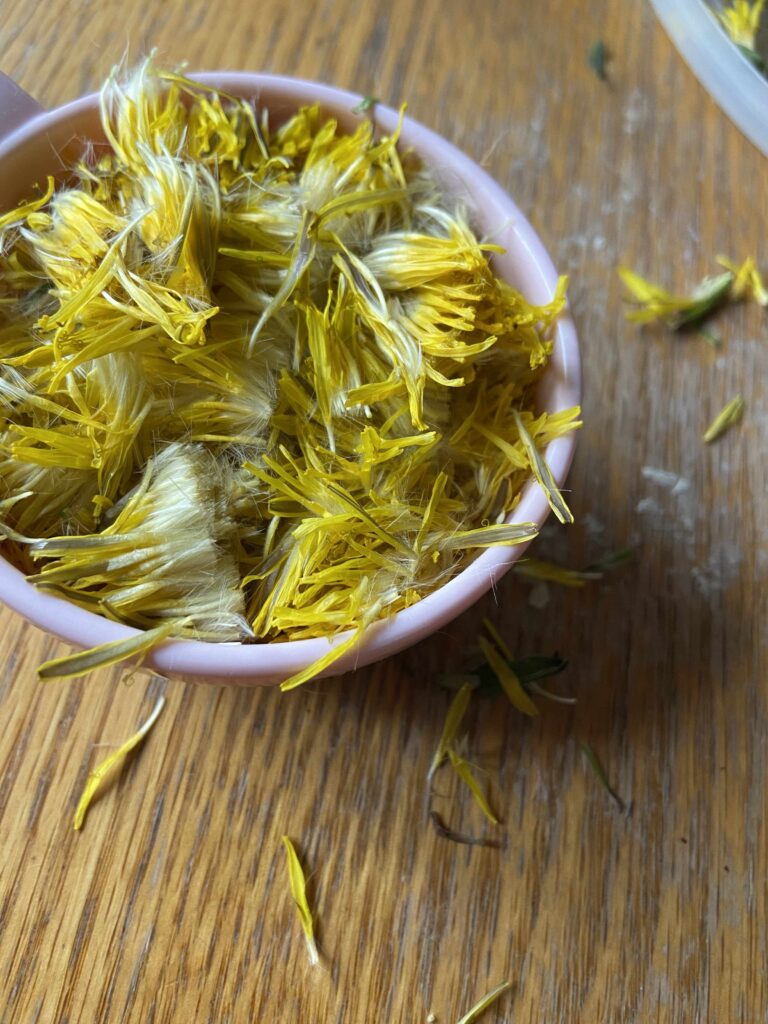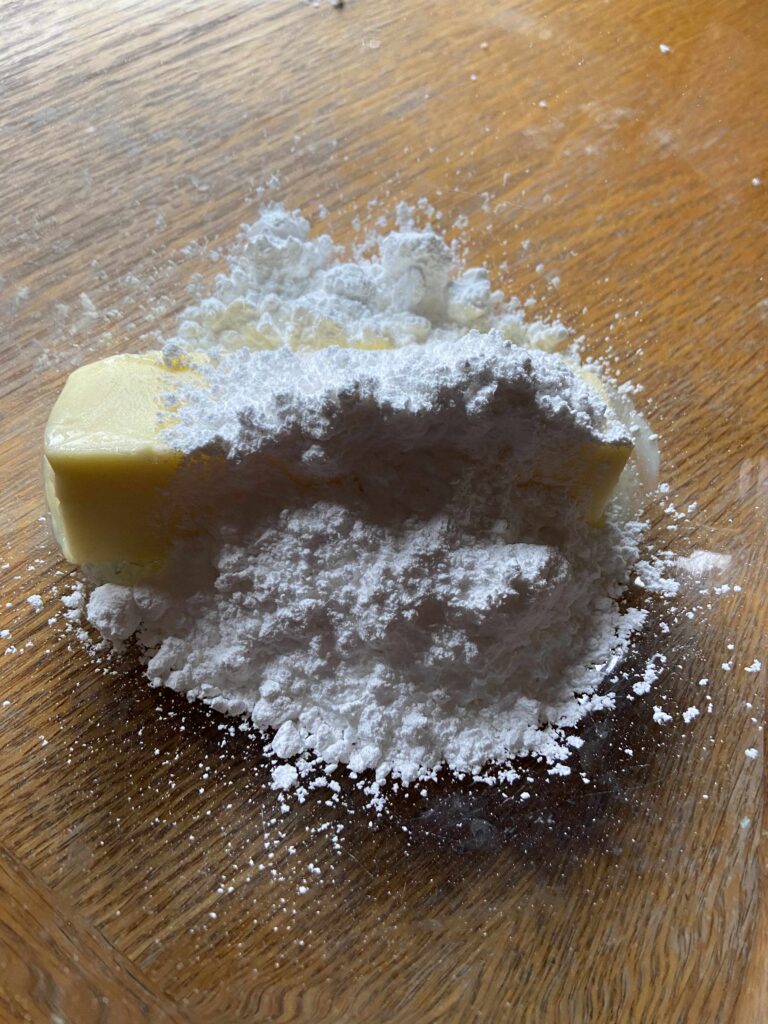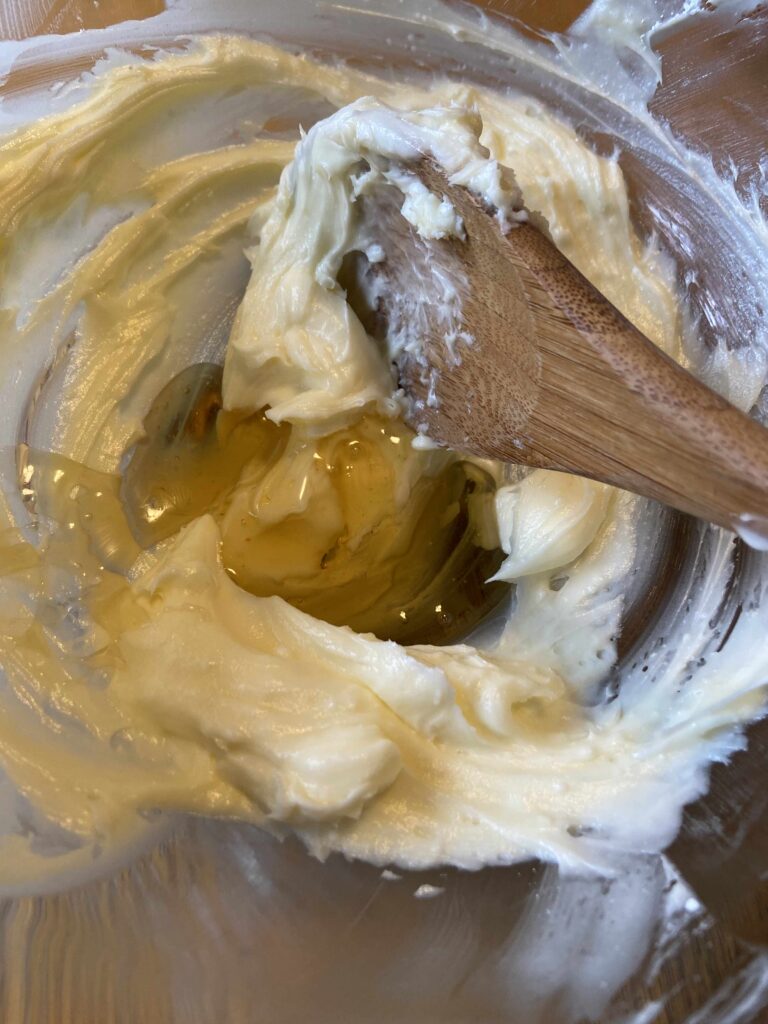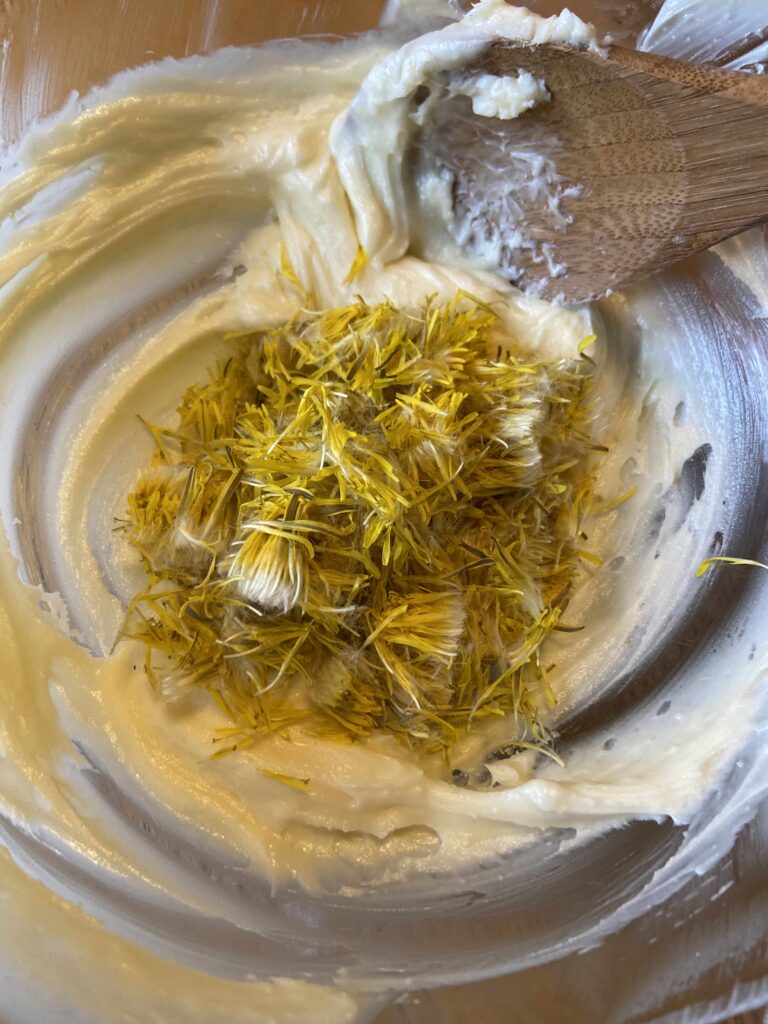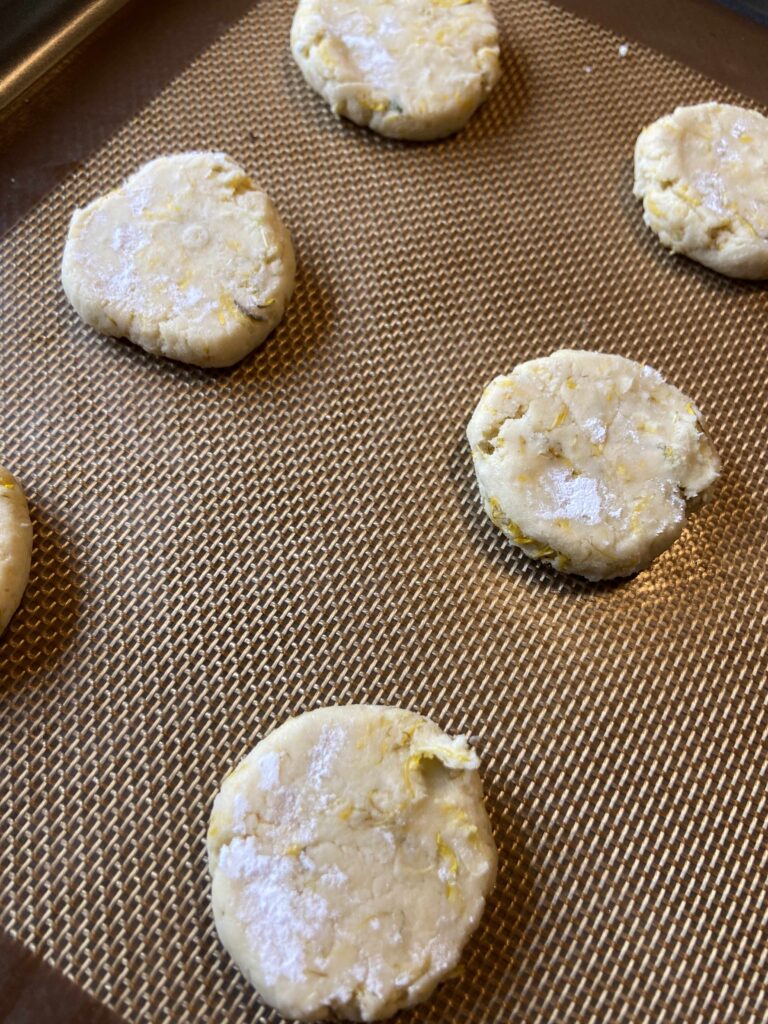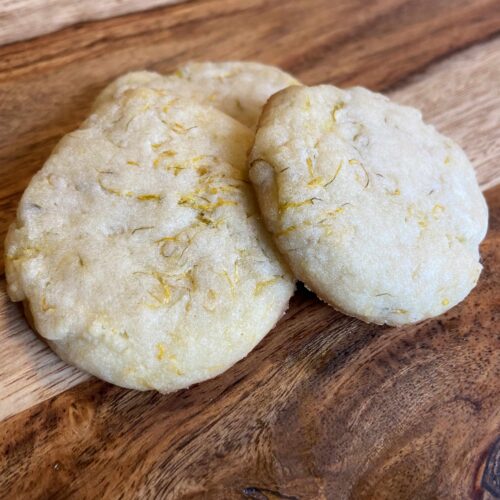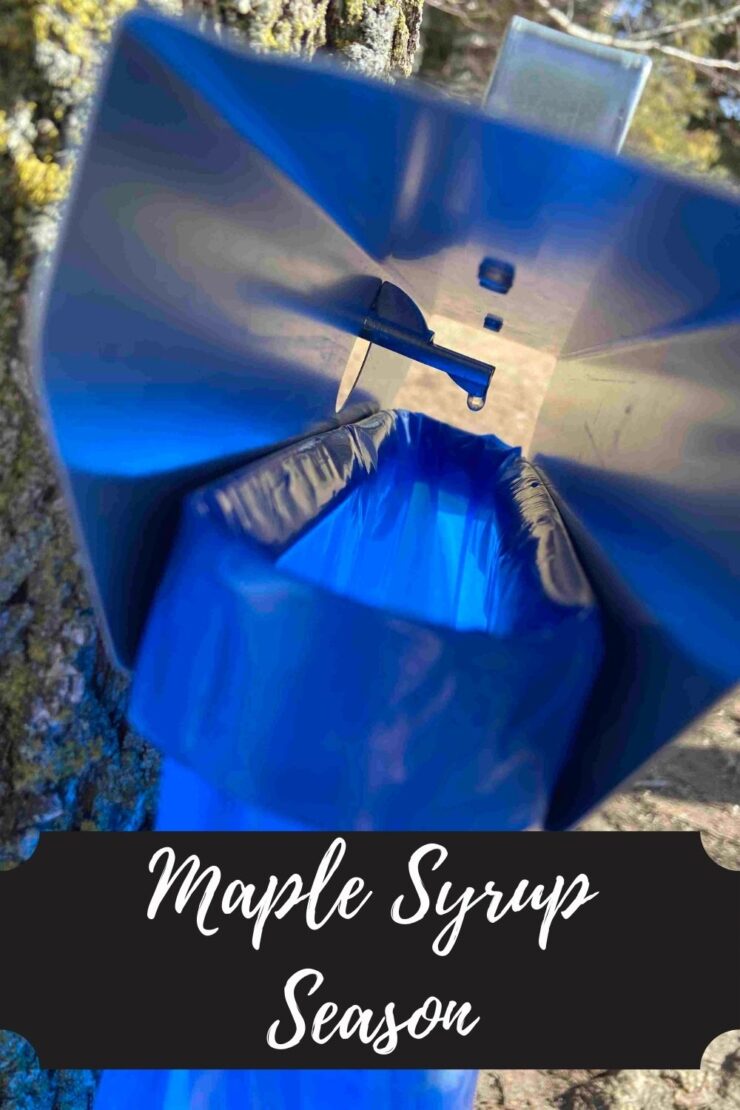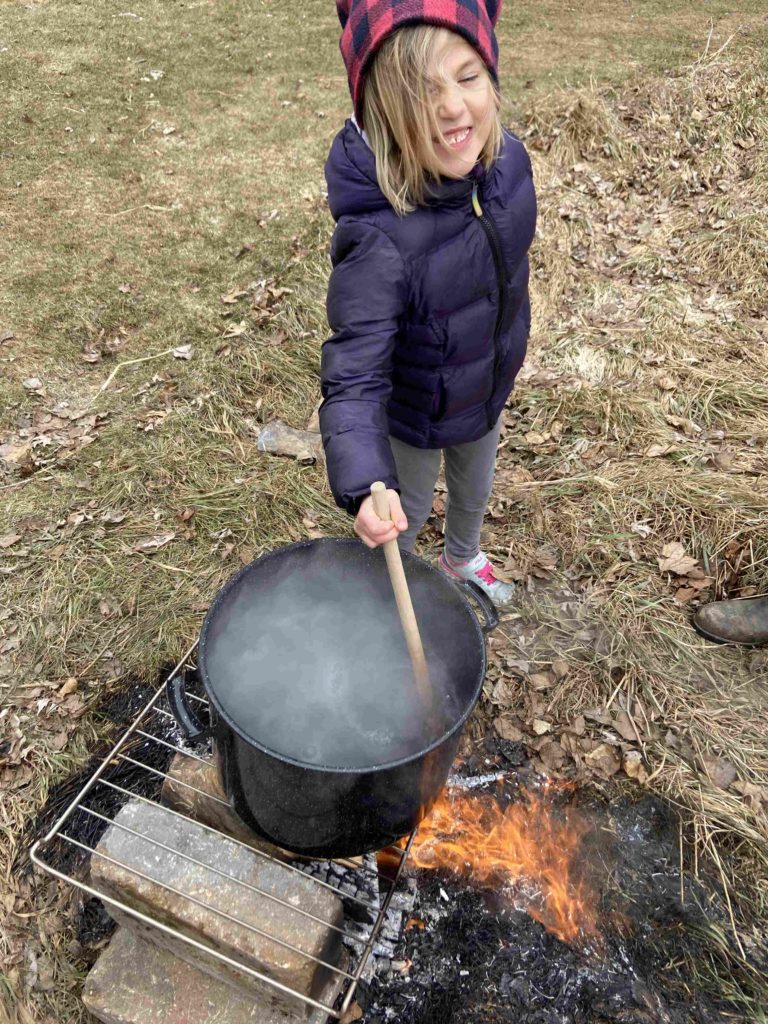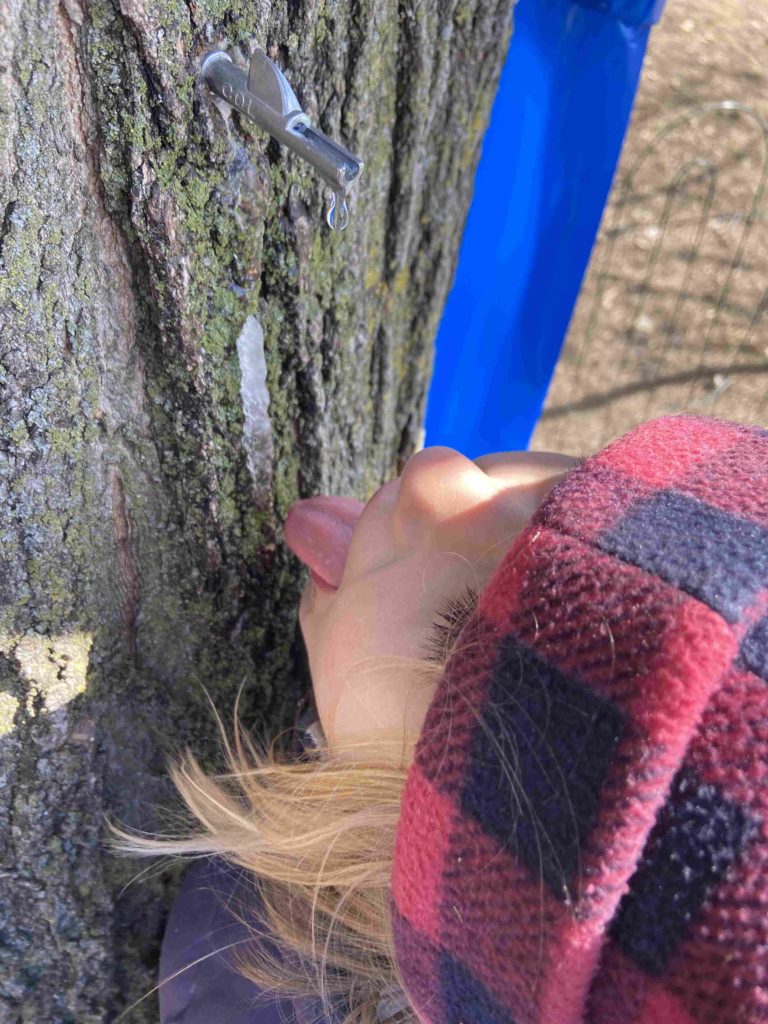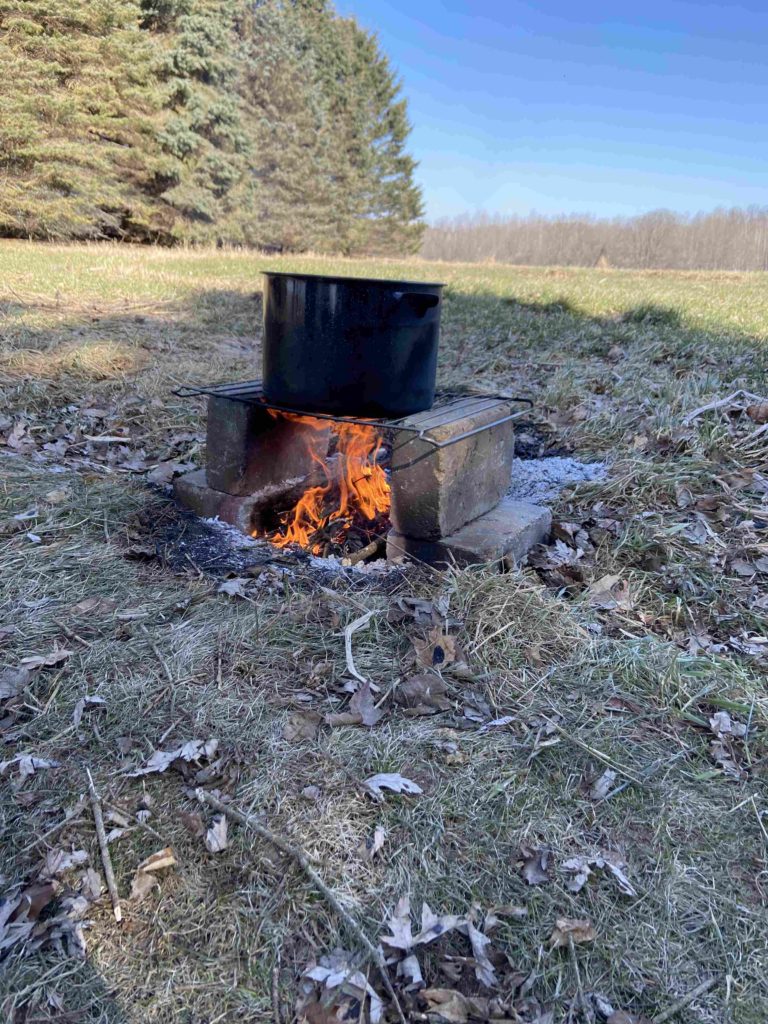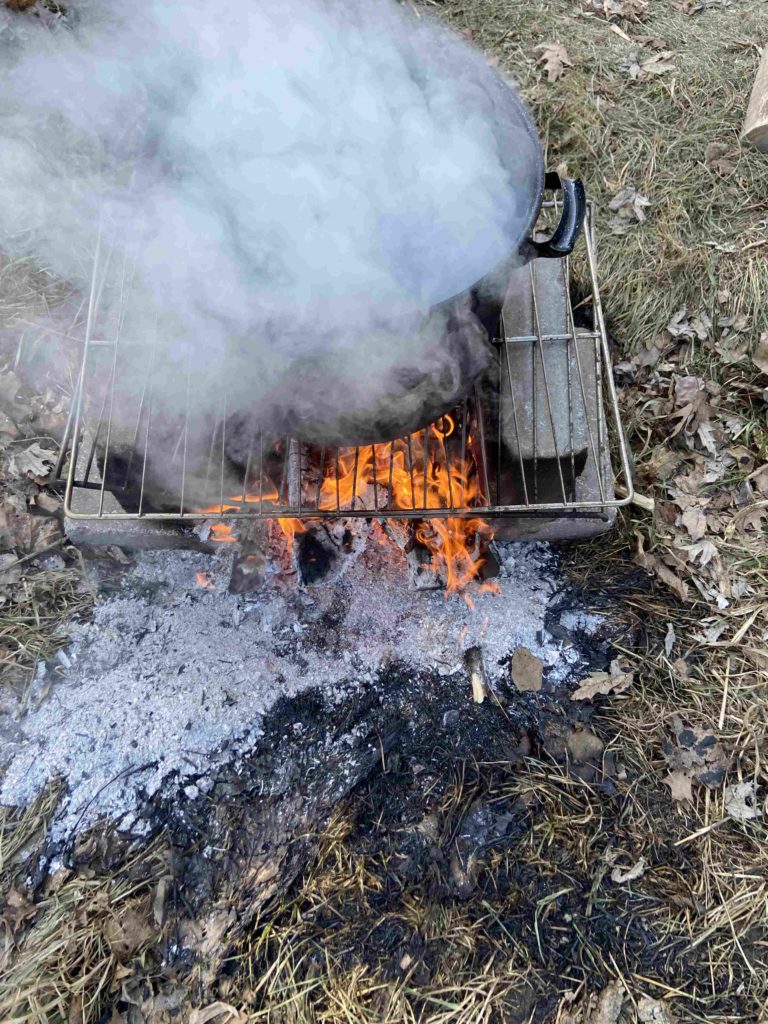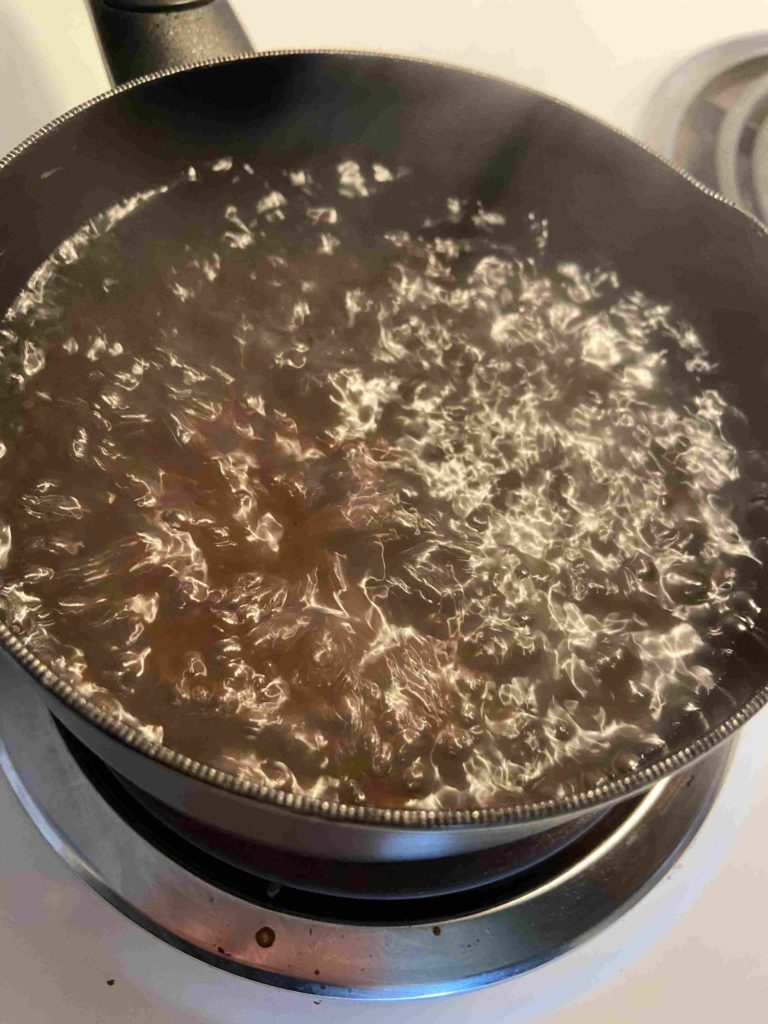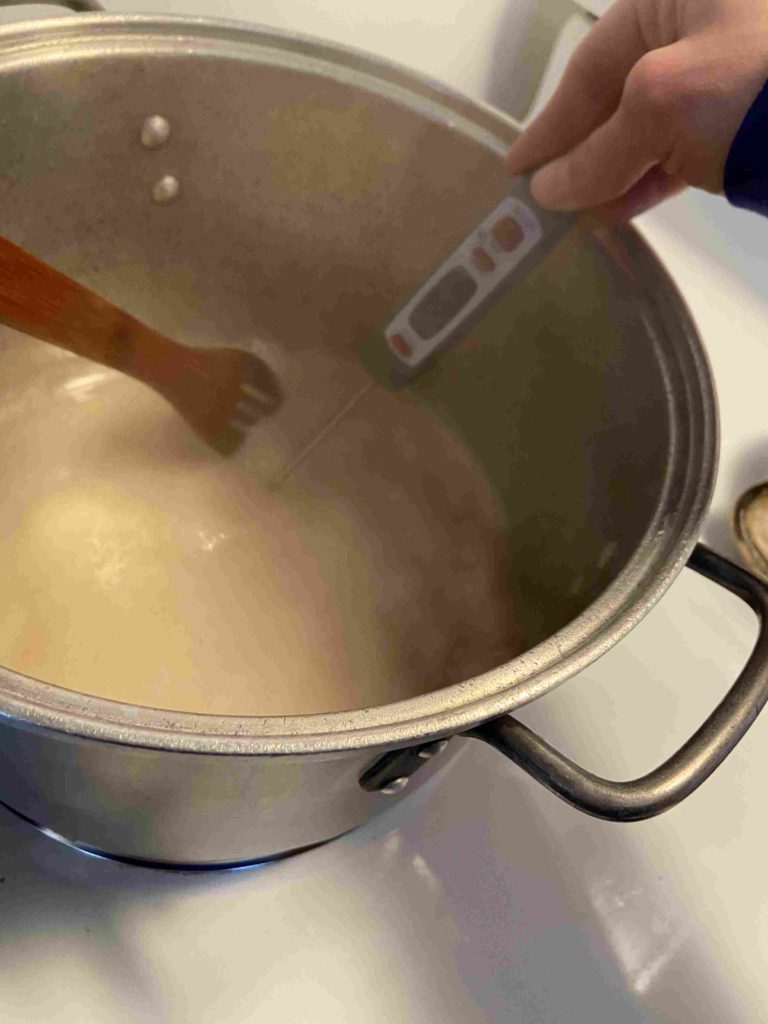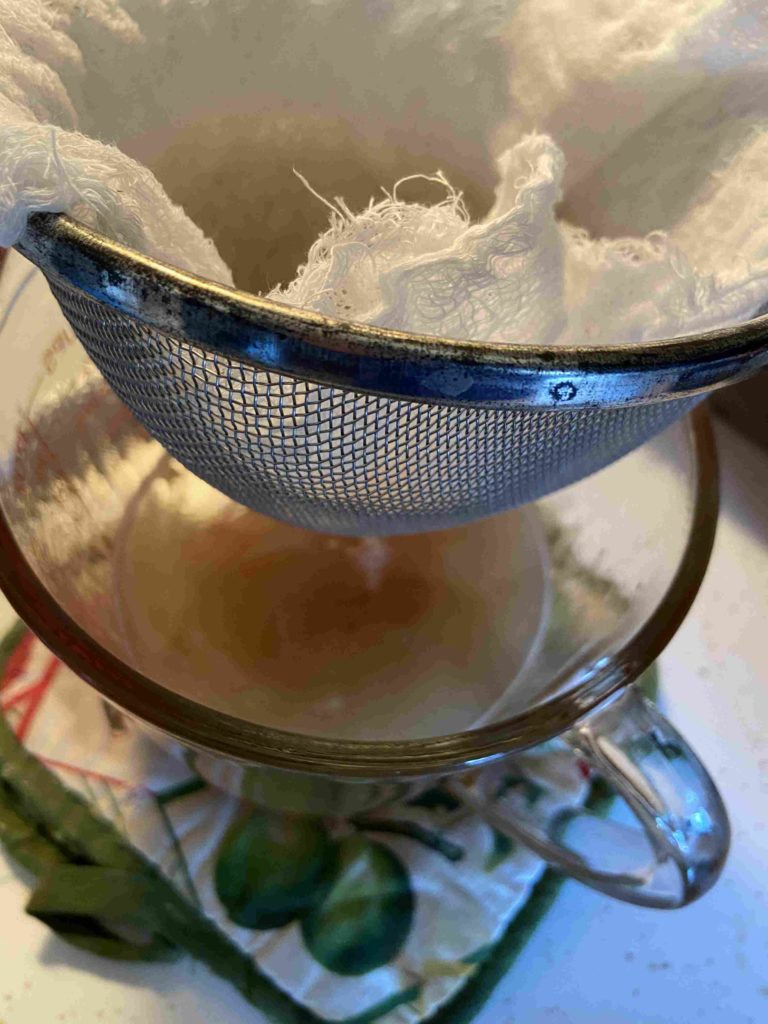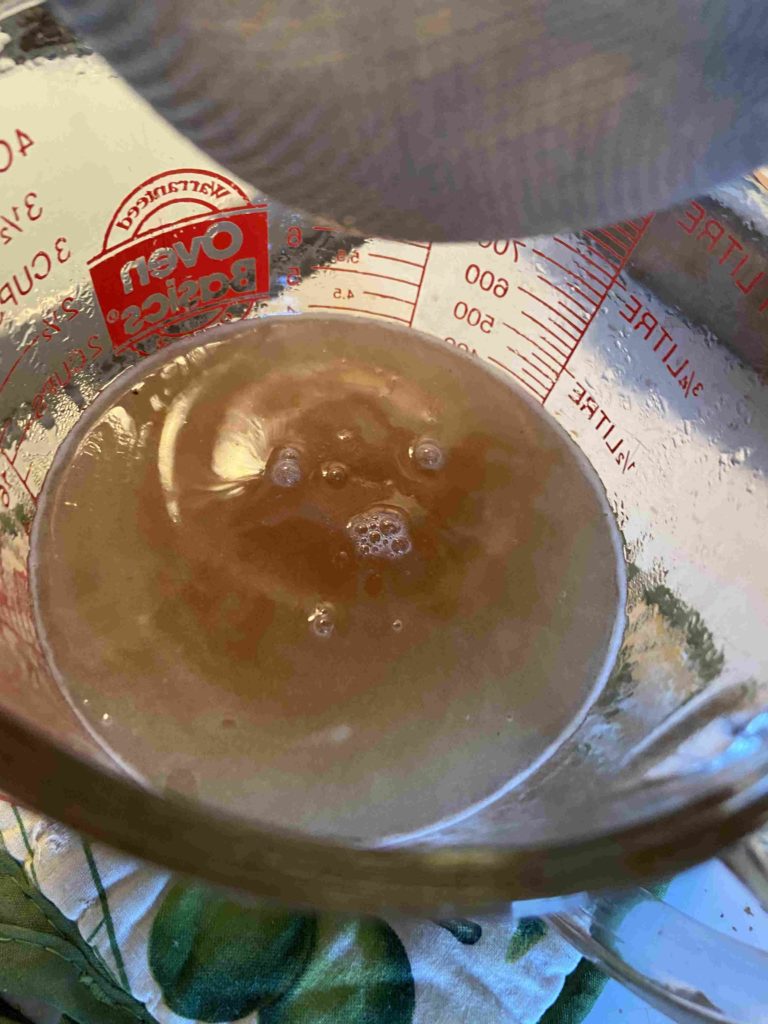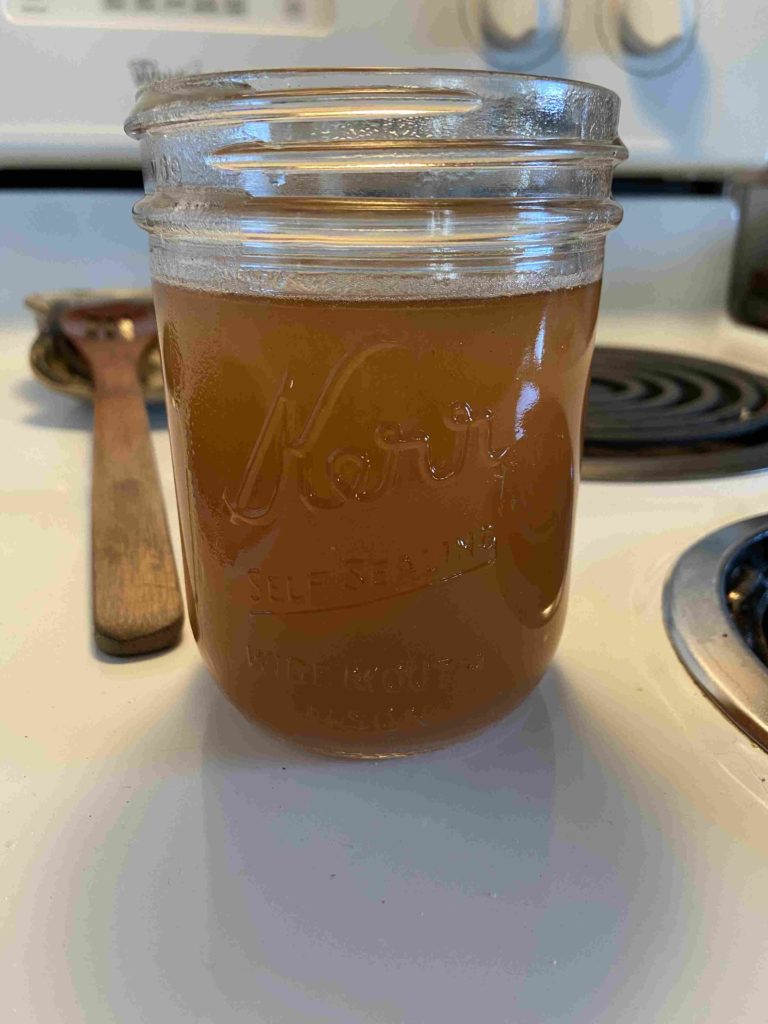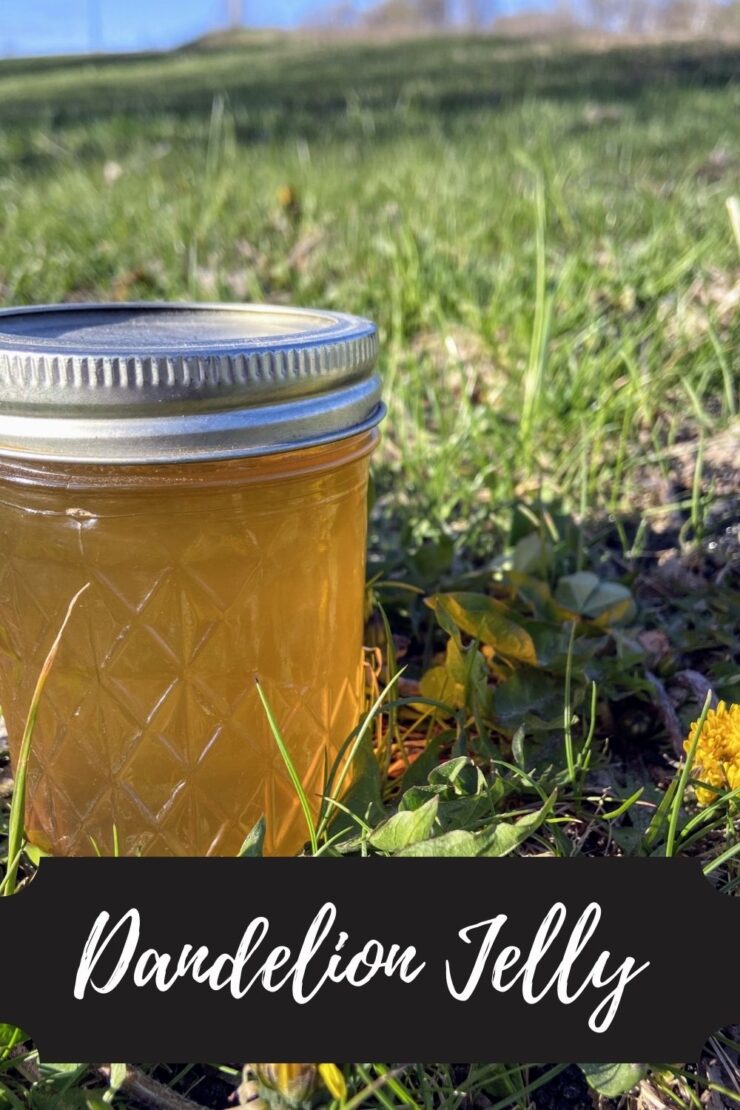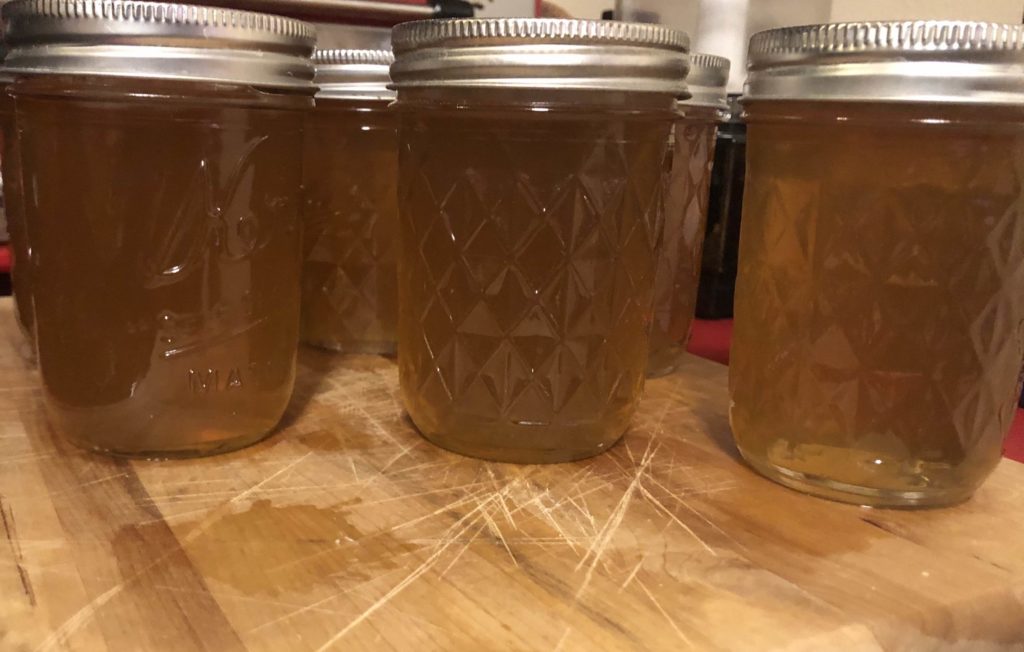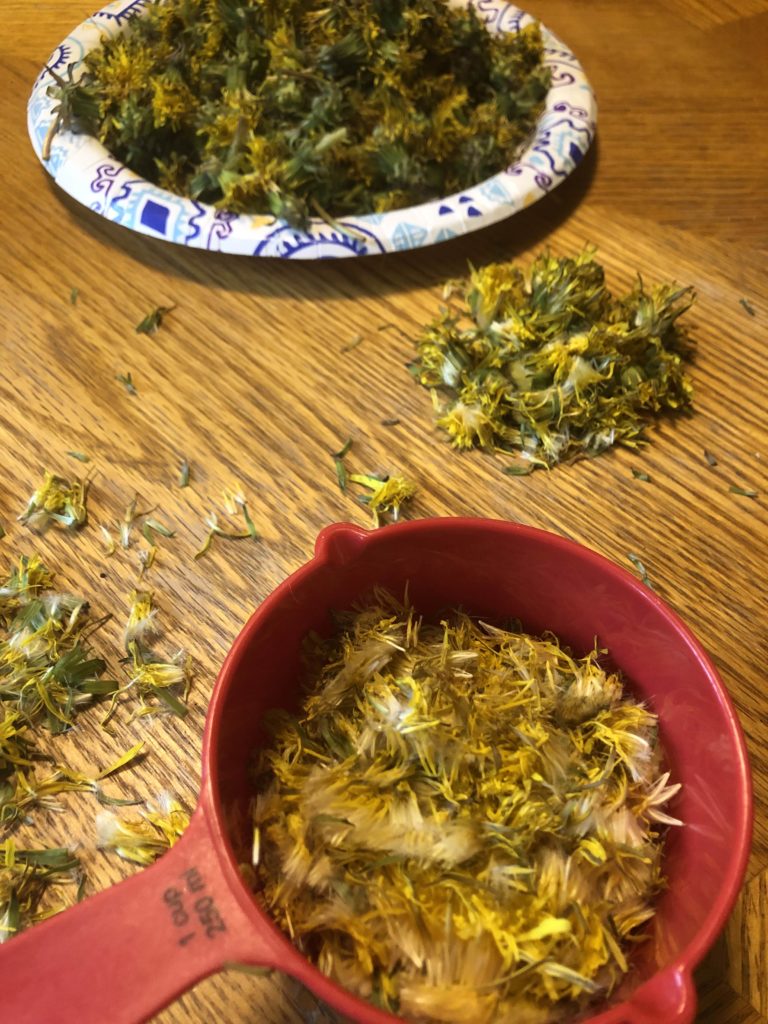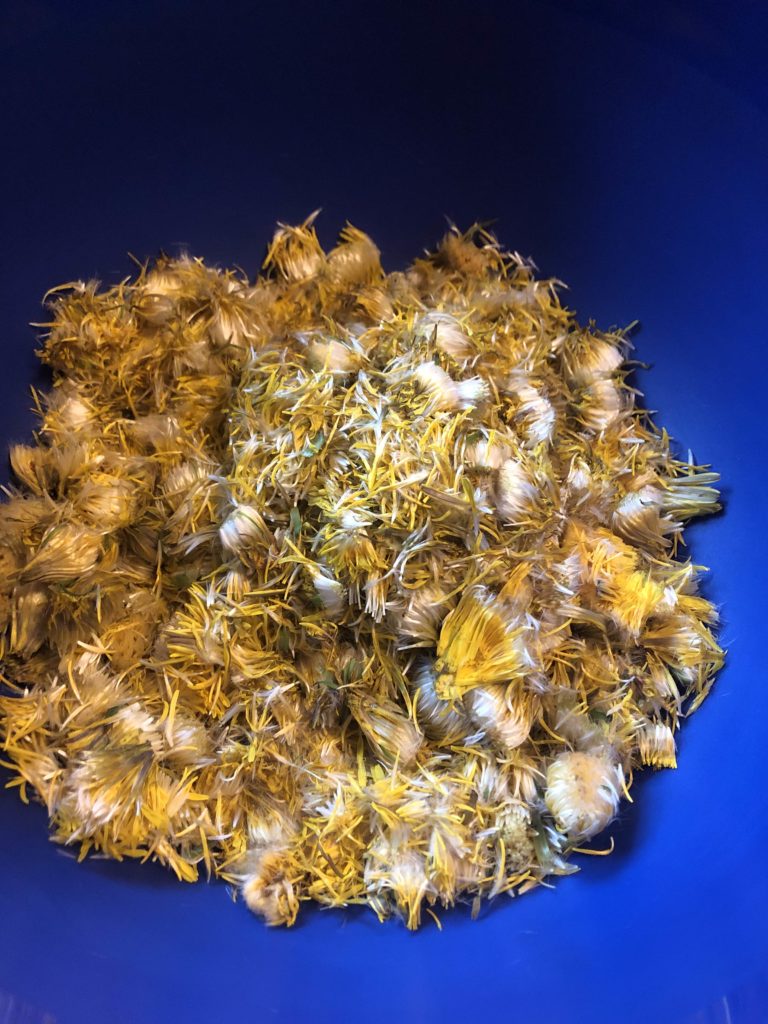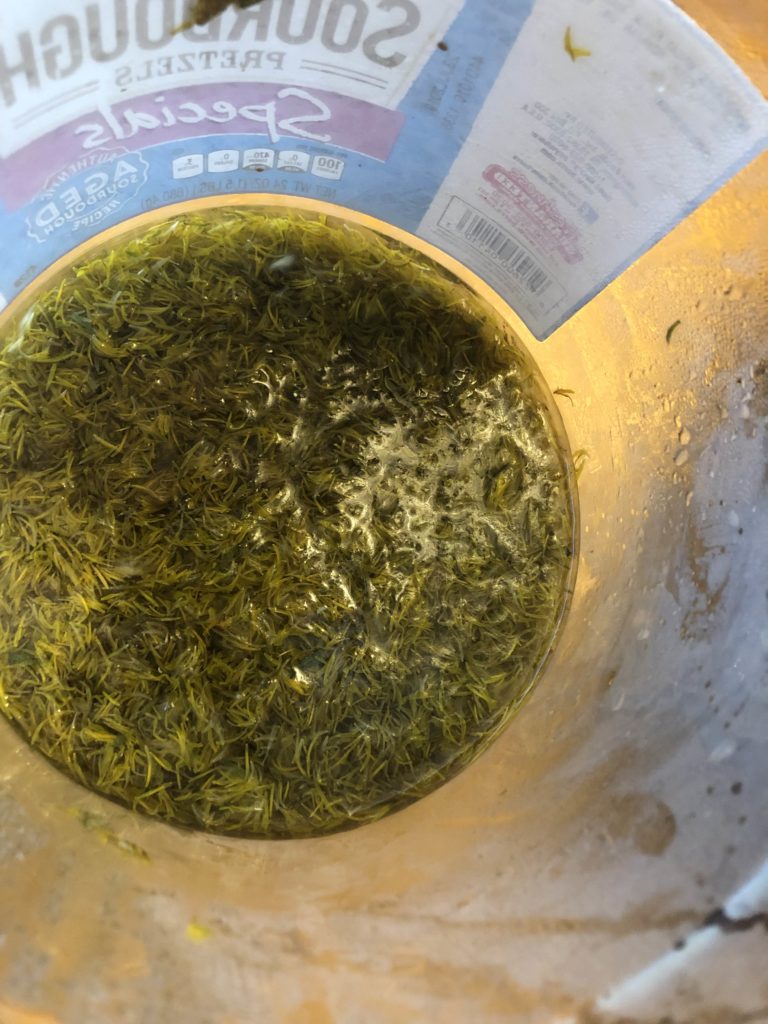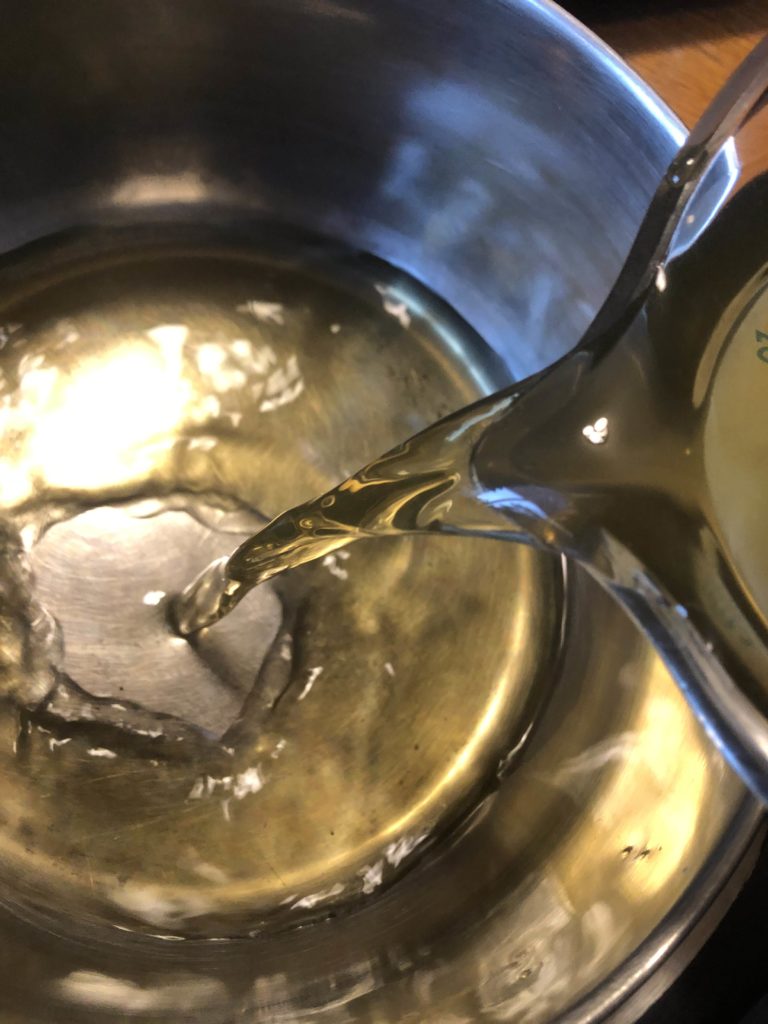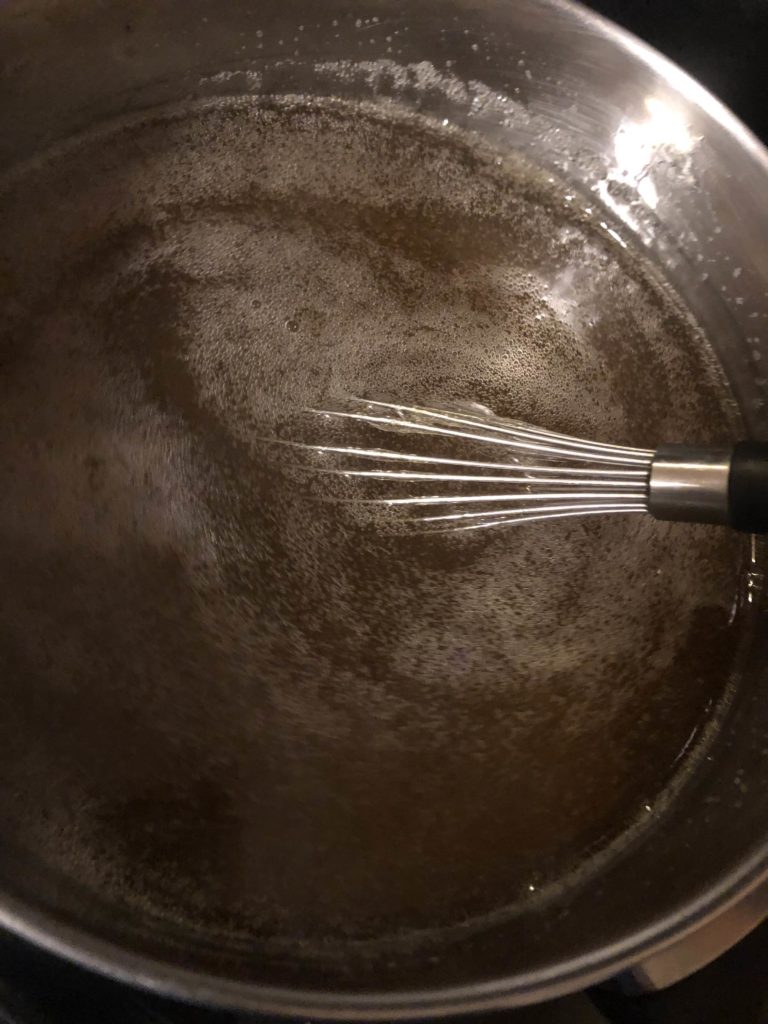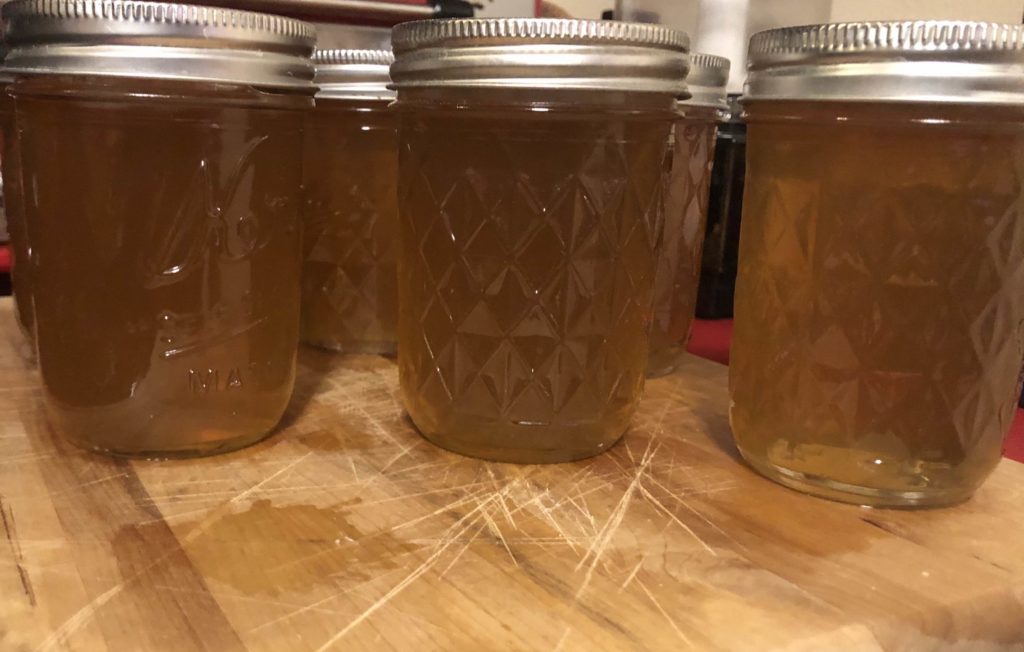Last year, I had a hodgepodge of berries left after making jams, sorbets, and the like. Specifically, I had some sour cherries, red raspberries, and gooseberries. Of course, there wasn’t enough of any of them to make a full batch of jam, but together, I did! I didn’t take any pictures and hardly wrote anything down because it was really an experiment of sorts. But then, I gave one lick of the kettle when I was finished and wow! That Cherry Raspberry Gooseberry Jam was out of this world! I declared it the best I had ever made. Of course, it was just a couple jars, but that’s okay!
Then, earlier this year, I asked the Mr to make me a peanut butter and jelly sandwich for lunch. He had to open a new jar of jam, but I never saw what he picked. I took one bite of the sandwich and immediately thought, “Whatever jam this is, it’s the best stuff I have ever made!”
Once I got home and looked in the fridge and saw it was cherry raspberry gooseberry jam. I knew I HAD to redo that recipe and share it with you all because, dang it, it’s awesome. The flavor is top notch (The Mr says, “There’s a lot going on in that jam…”) and you just need a few simple ingredients: the fruit, sugar, and lemon juice. You see, gooseberries have natural pectin so you don’t need to add any commercial pectin, which I always love.
My Canning Story
I do want to share that I did not grow up in a canning household. I learned about ten years ago, as soon as we bought our home and started our first garden. And while I had some support from my mother in law (thank you so much!), I learned SO MUCH from reading. If you are a first generation canner like I was, let me share some of my favorite resources:
Ball Complete Book of Home Canning: This book gives you a good idea of all the basics from the people who know canning forwards and backwards. I love that I can dig in and get just what I need.
Not Your Mama’s Canning Book: Modern Canned Goods and What to Make with Them: This book is SO FUN. It has some out of the ordinary recipes. We especially love the tomato soup and seasoned black bean recipes.
And finally, the National Center for Home Food Preservation has all the information you need for all sorts of food preservation, not just canning. I reference it often!
But enough about resources, you want to can right? (But seriously, I am going to give you the basics. If you are a newbie (Yay!), head to any of those resources for more detailed information)
Your Ingredients
For approximately 6 half-pints, gather:
- 3 cups red raspberries
- 3 cups gooseberries, cleaned
- 3 cups sour cherries, pitted
- 4 ½ cups sugar
- ¼ cup lemon juice
(Yes, that’s it! No, you can’t change out the sugar for a different sweetener. Canning is finicky like that)
The Prep Work
Fill the canning kettle with enough water that the jars will be covered by at least 2 inches of water. More is better in this case so over estimate. Begin to heat over high heat. Place the canning rack so that it is hooked over the side of the canner and put clean jars on it to keep them warm. Note: You don’t have to keep the jars in the rack, although it is helpful to keep them warm. You want the jars warm to prevent breaking when they are being filled.
Set the clean rings aside. I like to simmer my lids on low low heat in a small saucepan. Not necessary, but I like to think it helps them seal better.
If you have not already done so, measure out the sugar and the berries.
The Cherry Raspberry Gooseberry Jam Making
In a large, preferably shallow kettle, smash the fruit with a potato masher. Stir in the sugar and lemon juice. Begin to heat over medium-high heat, stirring often. I like to smash the berries more as they are cooking down.
Your end goal is to reach the gelling point. There are lots of tests for this, but I prefer the temperature test. If you are at sea level, the gelling point is at 220 degrees. For every 1000 feet of elevation, you subtract 2 degrees. For me, the gelling point is 218 degrees. Don’t have a decent food thermometer? Check out the National Center for Home Preservation website for other ways of testing for the gelling point.
It takes longer to reach the gelling point than I think it should. It also goes from needing 3 degrees to reaching the gelling point fast. You can get complacent while you are waiting and suddenly hit the temperature, so I am trying to warn you 🙂
You’ve hit the Gelling POint
Once the jam has reached the gelling point, remove from heat. Ladle into prepared jars, leaving ½ inch head space. Wipe rims of the jars with a damp, clean cloth, add lids and rings, tightening to fingertip tight. Place in the canner, increasing the heat to high. Once the canner reaches a boil, process for 15 minutes. Remove from heat and allow jars to cool in the canner over 5 minutes. Remove from canner, placing on the counter. Listen for the ping of the lids over the next 12 hours. Sealed jars are self stable. If any jar doesn’t seal, simply place it right in the refrigerator. You’ve got yourself delicious Cherry Raspberry Gooseberry Jam.
Note: You can skip the processing step all together if you feel more comfortable. If you do so, the jam will need to be stored in the refrigerator. The process of water bath canning creates a self-stable jam. That is, a jam that can be stored on the shelf.
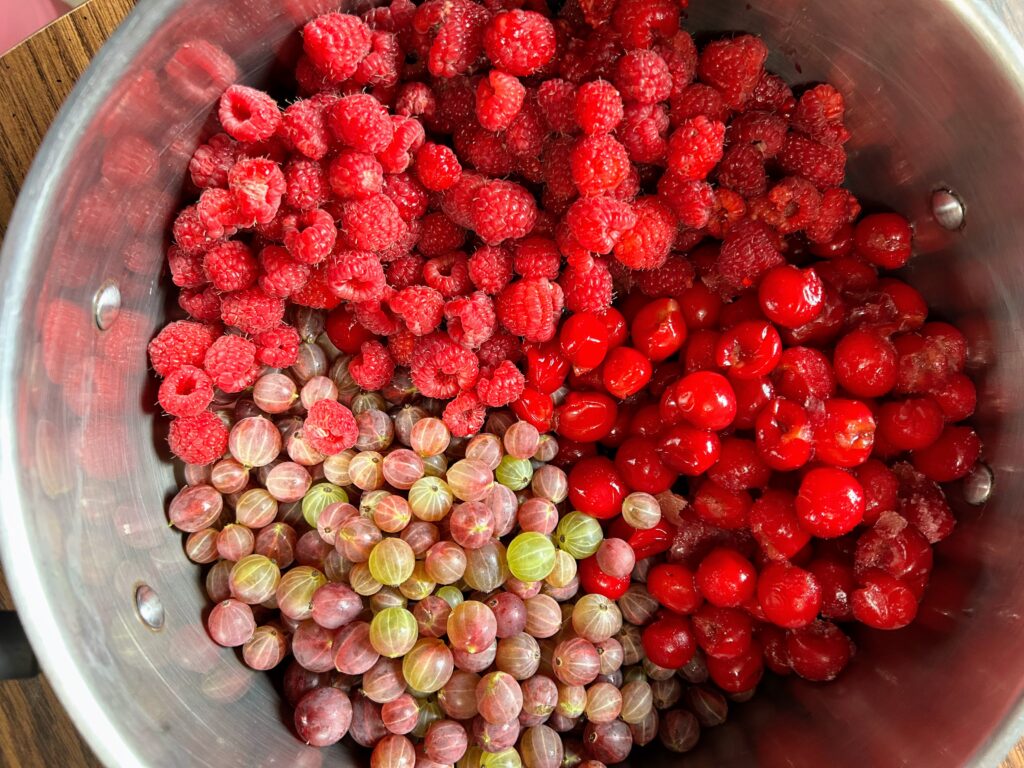
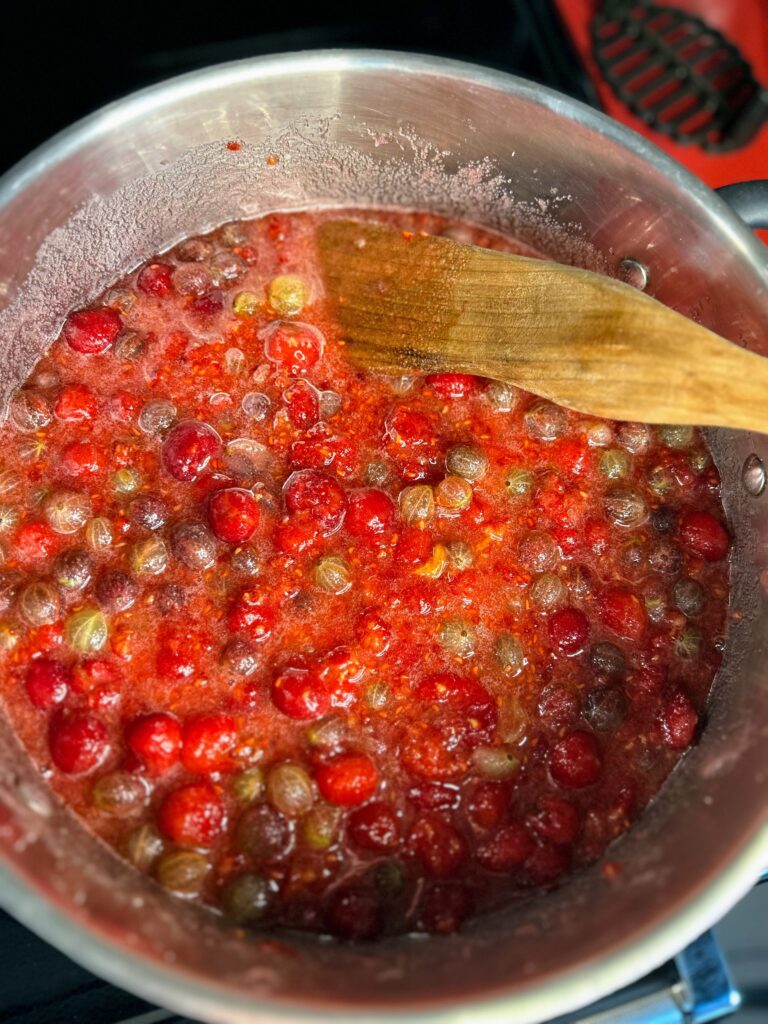
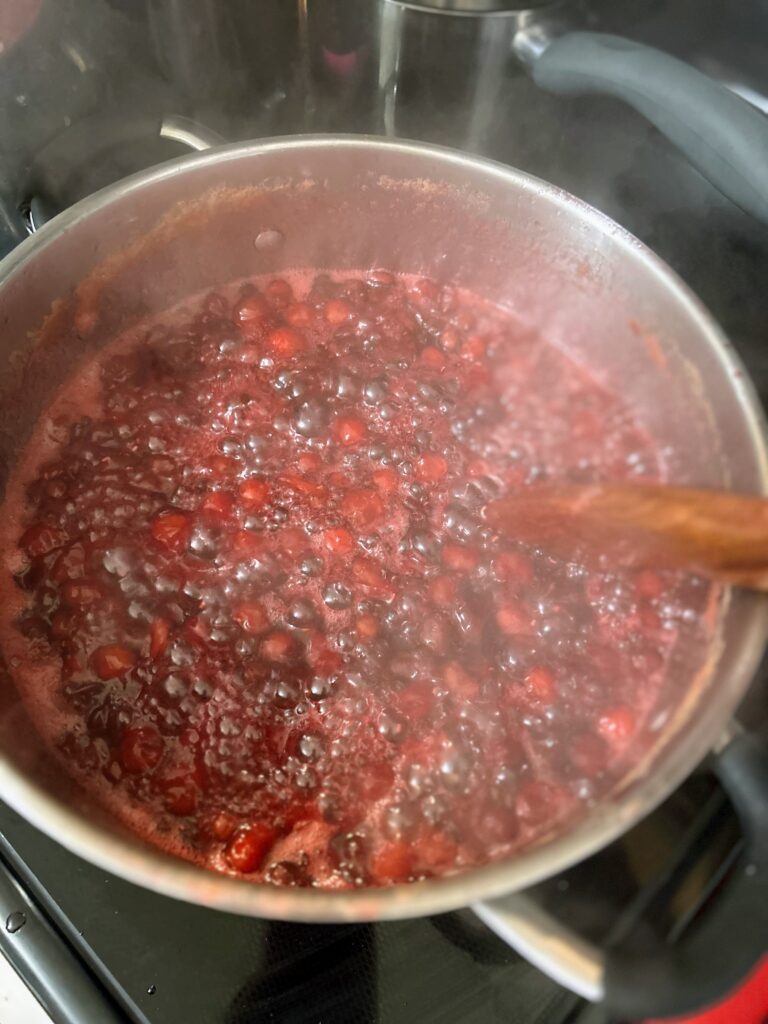
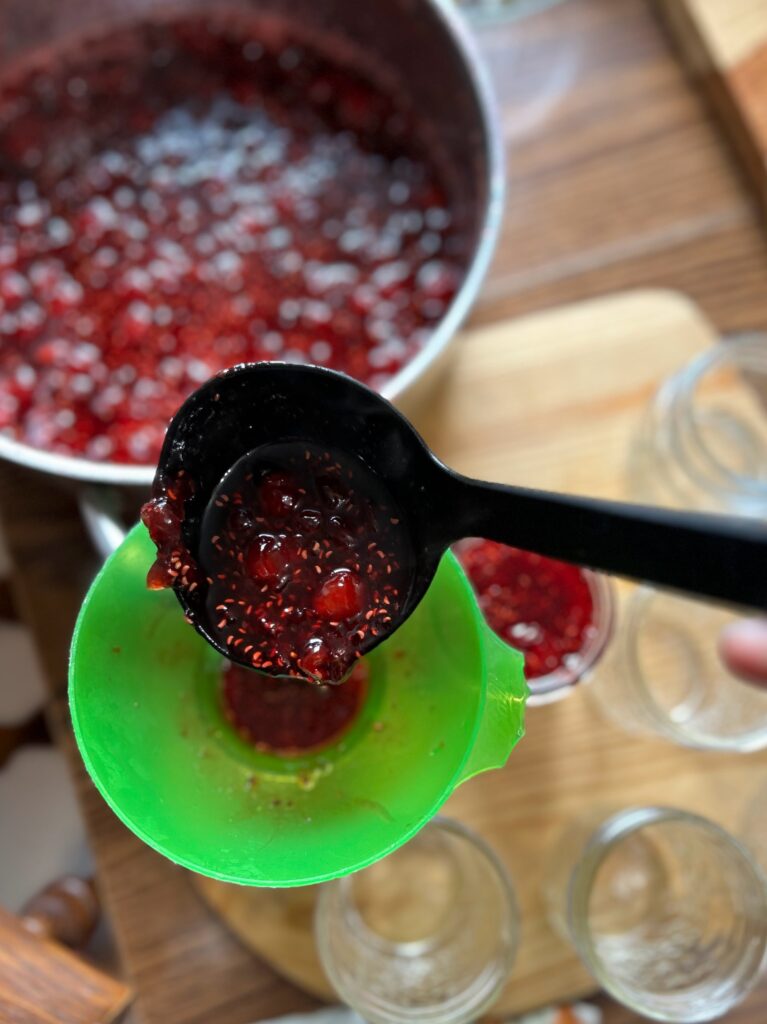
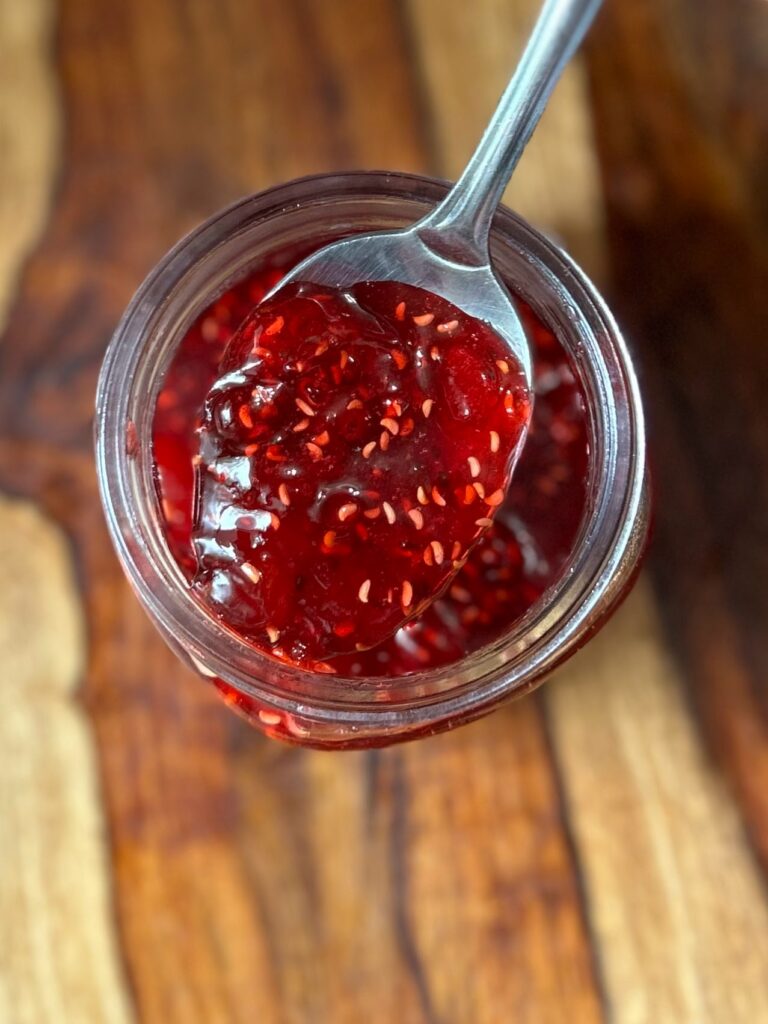
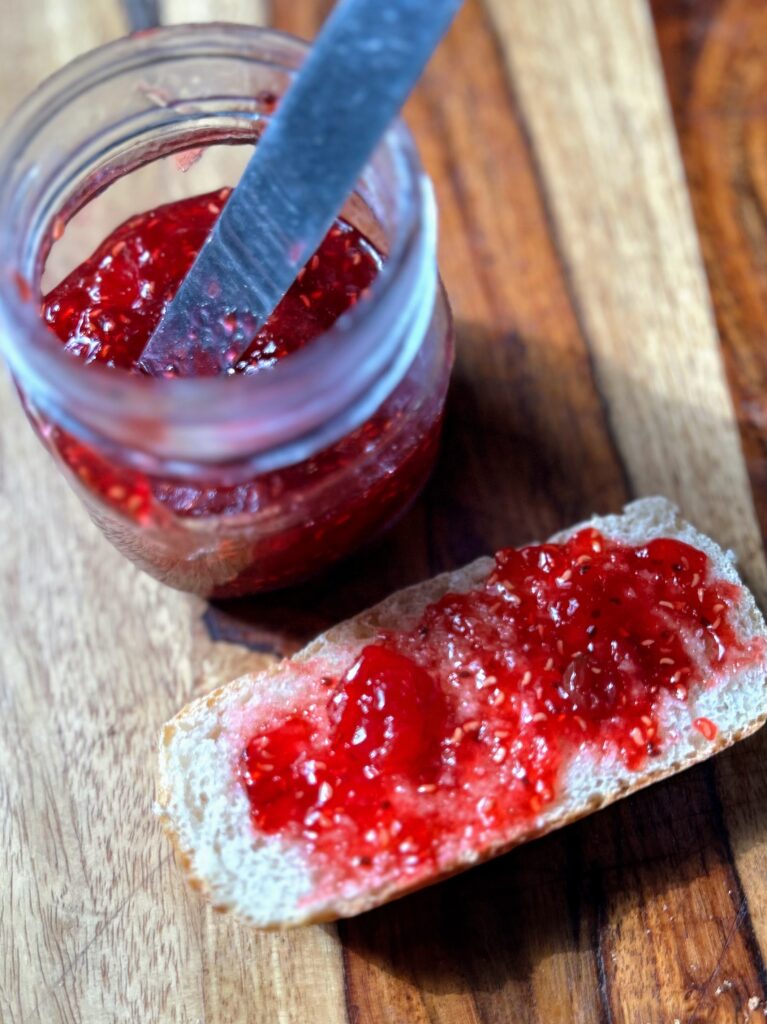
Tools of the Trade
There are some tools I love for canning! Of course, you need a canner. And the tools, while not necessary, are SUPER helpful as you prepare the jam. Finally, I always work on wooden cutting boards. The board I put the jars while I ladle it in becomes the resting spot for my jam after I have pulled it from the canner.
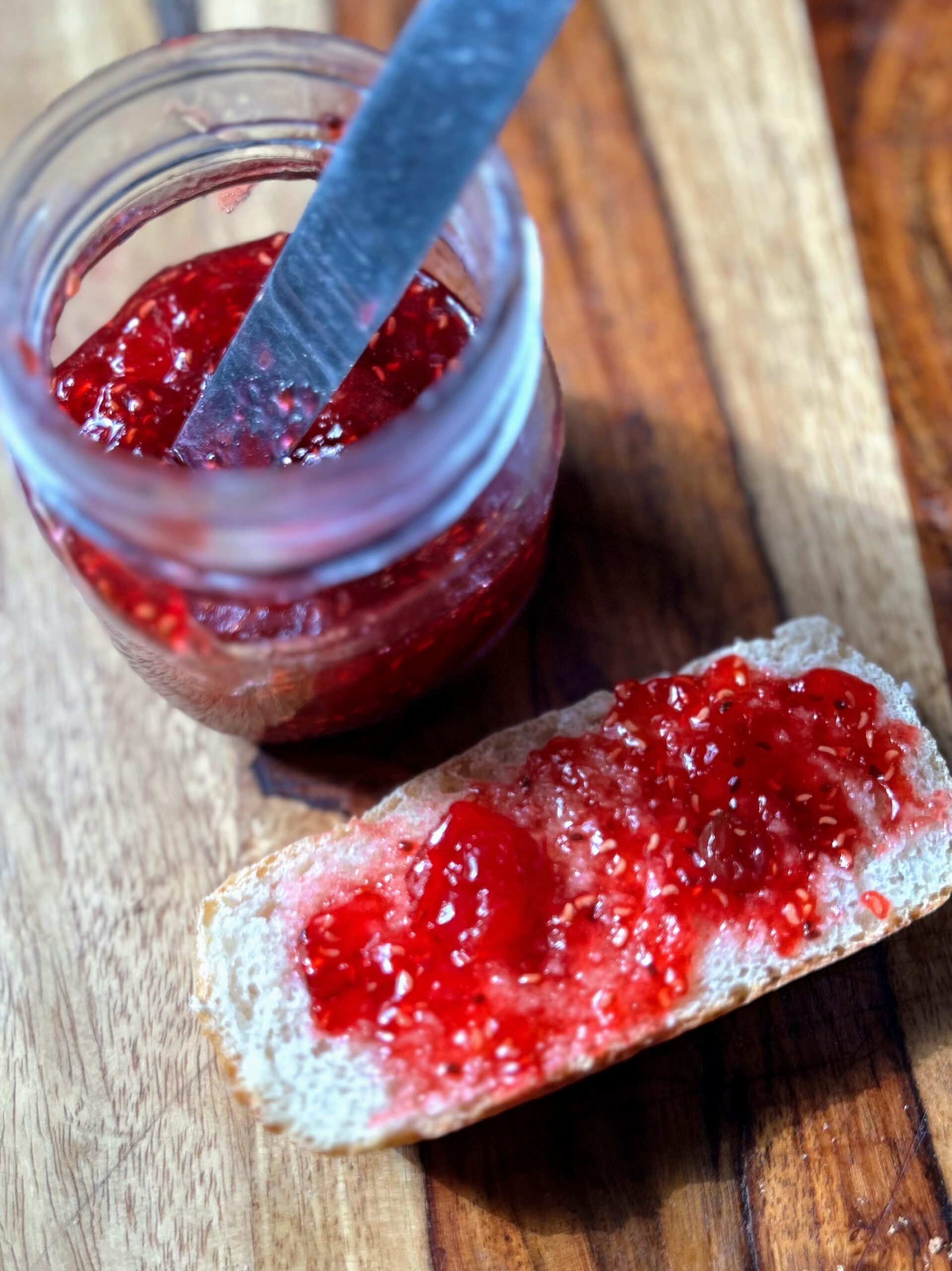
Cherry Raspberry Gooseberry Jam
Equipment
Ingredients
- 3 cups red raspberries
- 3 cups sour cherries, pitted
- 3 cups gooseberries, cleaned
- 4 ½ cups sugar
- ¼ cup lemon juice
Instructions
- If you have not done so, measure out berries and sugar.
- Wash and sanitize 6 ½ pint jars, rings, and lids. Keep warm. Fill the canner with enough water to cover the jars by at least 2 inches of water. Cover and heat on high. Watch the temperature, you want a simmer but not a boil when you place the jars in the water.
- In a large, shallow kettle, smash berries with a potato masher. Stir in sugar and lemon juice. Begin to heat over medium-high heat, stirring often. Smash more as they are cooking down.
- Heat to 8 degrees above the boiling point of water. If you are at sea level, the gelling point is at 220 degrees. For every 1000 feet of elevation, you subtract 2 degrees.
- Once the jam has reached the gelling point, remove from heat. Ladle into prepared jars, leaving ½ inch head space. Wipe rims of the jars with a damp cloth, add lids and rings, tightening to fingertip tight. Place in the canner, increasing the heat to high. Once the canner reaches a boil, process for 10 minutes. Remove from heat and allow jars to cool in the canner over 5 minutes. Remove from canner and allow to rest for 12 hours before storing.
Notes
Cherry Raspberry Gooseberry jam not enough?
Check out some of the recipes below!

